

Providing Quality Moves Around The World
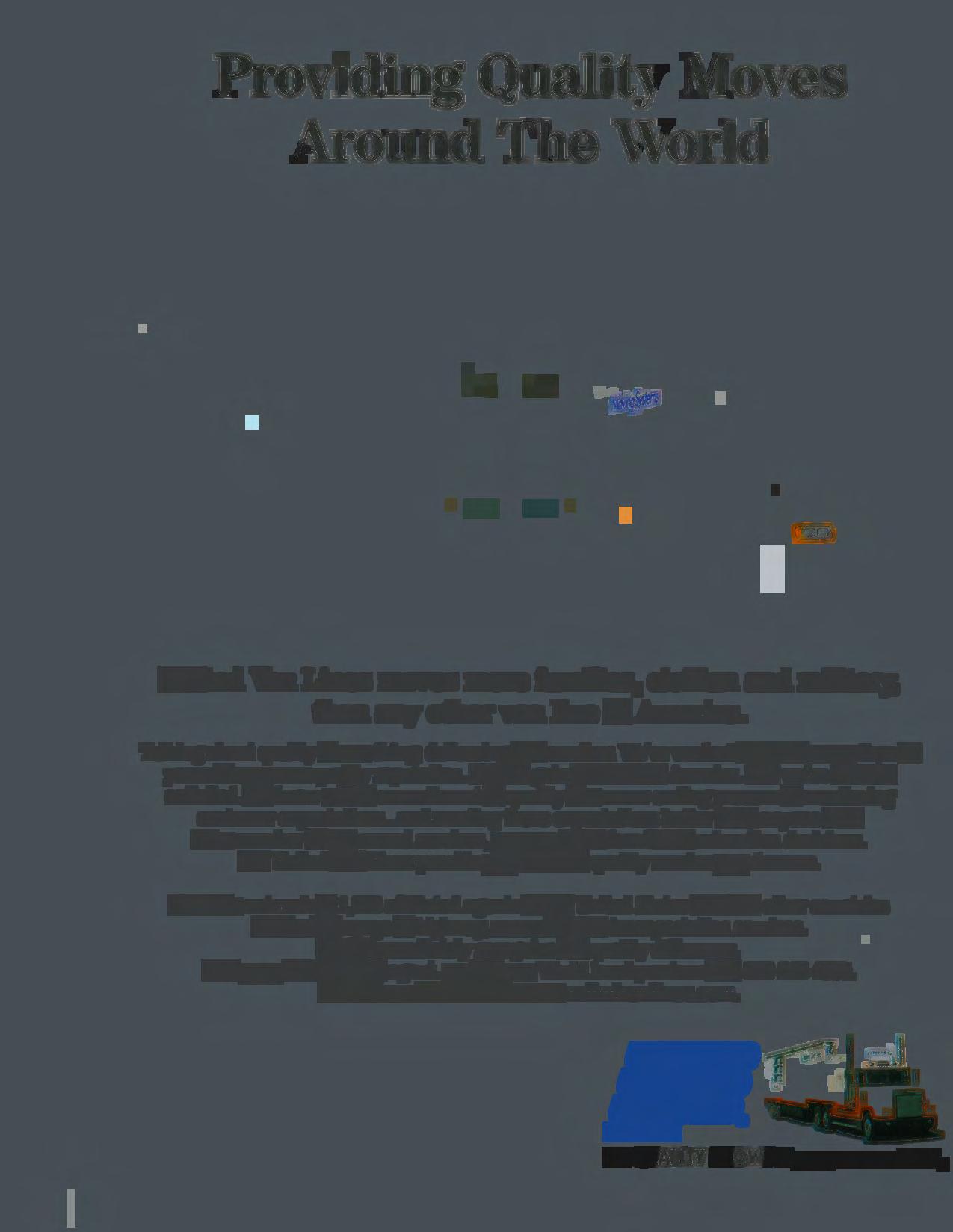
United Van Lines moves more families, civilian and military, than any other van line in America.
Talking about quality is one thing; delivering it is another. We've worked hard for more than 50 years to earn our quality reputation ... and to gain the trust of America. But we're still not satisfied. We know a true commitment to quality is a never-ending process of monitoring customer expectations and meeting those expectations better than anyone else. As a member of the armed services, you are often faced with relocation decisions. Let United Van Lines provide you with the quality service you deserve.
United's network of 1,050 affiliated agents in the United States and 135 other countries offer a full range of highway, ocean and air transportation services. You'll immediately recognize the quality difference. Call your local United agent...or call our World headquarters at 1-800-948-4885. Or visit our Web site at www.unitedvanlines.com.
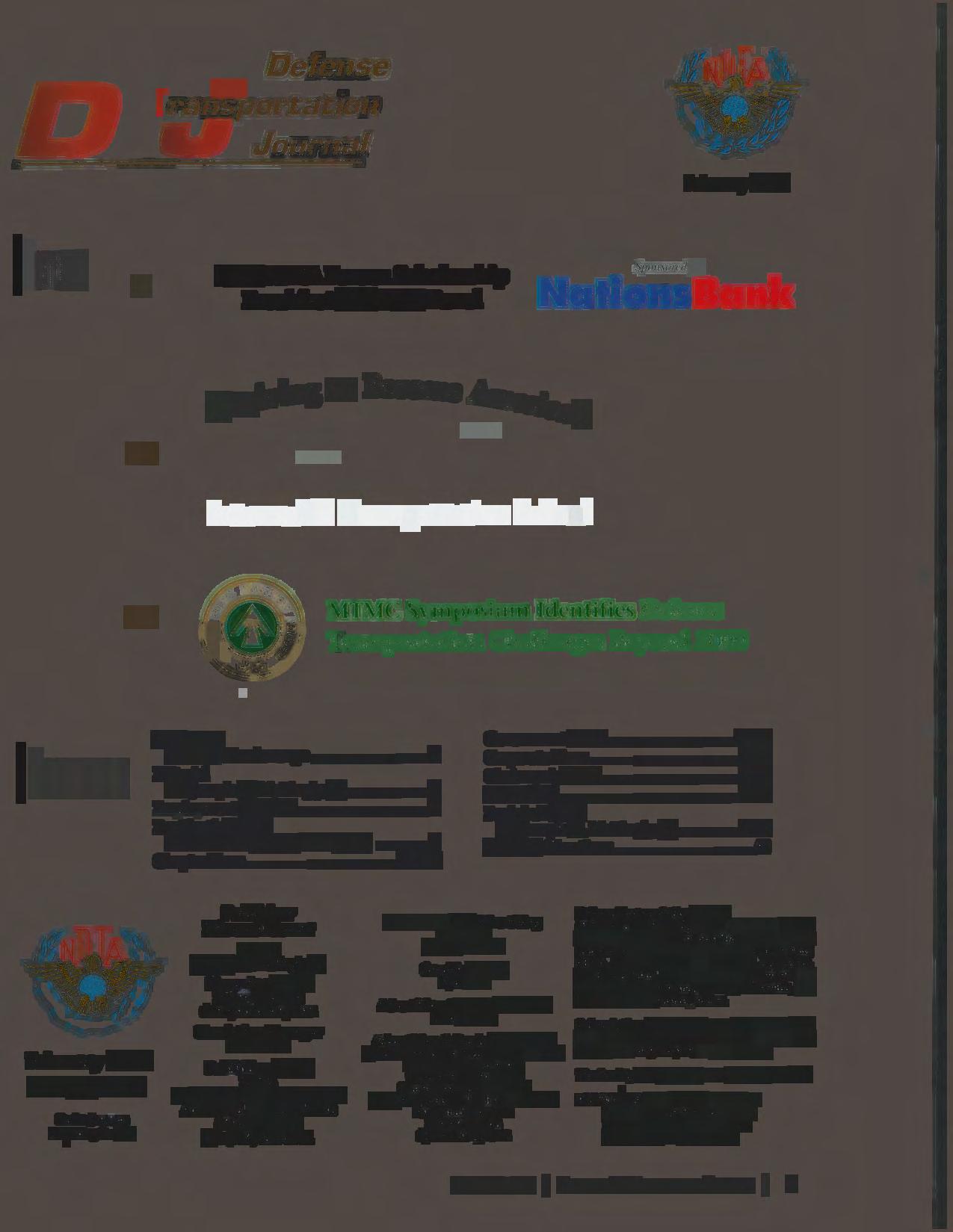
Subscrlptlaa
I hope everyone's New Year has been off to a good start. I heard from the Hodja Chapter in Turkey, and they certainly have had a busy kickoff to 1999. Their monthly luncheons have been well attended, and they've had various speakers that have kept things very interesting. In the plans are a tour of the largest Mosque in Turkey, a golf tournament, and a bowling tournament.
The Newport News Chapter has already begun preparing duck sales for our upcoming 4th Annual Duck Race in Anchorage, AK. Lynn Nelson is working on a letter to send 0ut to Chapter members to encourage the early adoption of our young ducks. Good luck to you.
Recently, I attended the Washington, DC Chapter's A-35 Scholarship Auction. The theme touched on Valentine's Day and was called "Moving Hearts and Minds." In all ways, it was an outstanding success. The Lyceum in Old Town Alexandria, VA, was beautifully decorated, the food was great, and the affair was well attended. Over $8,800 was raised for the scholarship fund (the plan was $7500). Congratulations to Bob Lehman for his leadership and an outstanding plan. Johnnsie Cogman, the auctioneer (her 11th straight year as auctioneer), and Ron Conardy, Master of Ceremonies, assisted Bob. Nancy Gast-Romps kept the prizes flowing, and her husband ohn handled the books. Others who served on the Auction Committee and deserve to be recognized are
Curtis Moore, Santhea Hicks, Betty Yanowsky-Slanta, Kevin Epstein, Jennie Walters, Isaac Smith, and John Gatewood. I know that there were others working behind the scenes that kept things running smoothly who deserve recognition; however, I wasn't able to get all the names together before our publishing deadline. Many thanks to all of them. Let me hear from ail of you!

Theresa Giordanengo Vice President A-35
EDITORIAL REVIEW BOARD AND EDITORIAL MISSION
Ms. Lana R. Batts, Exec Dir., Interstate Truckload Carriers Conf
Dr. James M. Daley, Associate Dean and Professor of Marketing, Boler School of Business John Carroll University
Dr. Jerry R. Foster, Associate Professor, College of BZLsiness, University of Colorado
COL Norbert D. Grabowski, USA (Ret.), Exec. Ass't., NDTA
Maj Gen John E. Griffith, USAF (Ret. ), Transportation Logistics Consultant
Richard H. Hinchcliff, Consultant
Brig Gen Malcolm P. Hooker, USAF (Ret.), Member, Board of Directors, NDTA
Dr. Joseph G. Mattingly Jr., College of B1L5iness & Management, University of Maryland
Whitefield W. Mayes, Chief Engineer, Transportation Engineering Agency, MTMC
Dr. Gary S. Misch, U.S. Naval War College (Ret.)
Dr. Richard F. Poist Jr., Professor, Transportation and Logistics, Iowa State University
MG Harold I. Small, USA (Ret.), Consultant
COL Joseph Torsani, USA (Ret.), Consolidated Safety Services Inc.
Dr. David Vellenga, Dean, Haworth College of Business, Western Michigan University
Dr. L. Leslie Waters, Professor of Transportation, Emeritus, Indiana University School of Business
Dr. Clinton H. Whitehurst Jr., Senior Fellow, Strom Thwmond
Institute of Government and Public Affairs, Clemson University
Editorial Objectives
The editorial objectives of the Defense Transportation Journal are to advance knowledge and science in defense transportation, the partnership between the commercial transportation industry and the government transporter. DTJ stimulates thought and effort in the areas of defense transportation and logistics by providing readers with
• News and information about defense transportation issues;
• New theories or techniques;
• Information on research programs;
• Creative views and syntheses of new concepts;
• Articles in subject areas that have significant current impact on thought and practice in defense transportation;
• Reports on NDTA Chapters.
Editorial Policy
The Defense Transportation Journal is designed as a forum for current research, opinion, and identification of trends in defense transportation. The opinions expressed are those of the authors and not necessarily of the Editors, the Editorial Review Board, or the NDTA.
Editorial Content
For correspondence including feature manuscripts and books for review, write:
Joseph G. Mattingly Jr. Editor
Defense Transportation Journal
Asst. Dean, Emeritus Van Munching Hall University of Maryland College Park, MD 20742 (301) 405-7163-Voice Mail (301) 405-0146-Fax (703) 256-3172-Home Email: jmatting@deans.umd.edu
Government, Corporate, NDTA and Chapter News, Pages Past, Mini-features, and all other departments
Send all news, photos, press releases, announcements, etc. to: Denny Edwards
Managing Editor
Defense Transportation Journal
NDTA
50 South Pickett St., Suite 220 Alexandria, VA 22304-7296
Phone: (703) 751-5011
Fax: (703) 823-8761
Email: denny@ndtahq.com



a
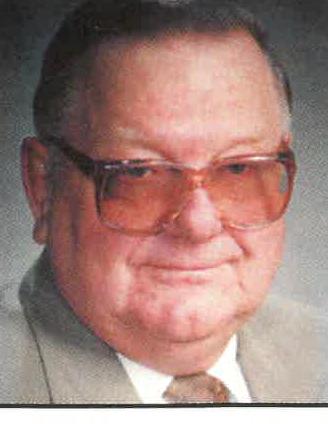
Dr. Joseph G. Mattingly Jr.
Government/Industry Partnership

Last year the Congress passed the Transportation Equity Act for the 21st Century (TEA 21). In the Bill, provisions were made to have annual highway spending match the amount of fuel taxes paid into the fund annually by motorists. This is supposed to end the Congressional practice of holding that money hostage to help balance the federal budget. The dream of some members of Congress to move the Highway Trust Fund off-budget was not realized. In addition to not removing the Trust fund from the federal budget, it appears to me that at the end of the six years covered by the legislation, the fight will begin all over again.
This has been a long and bitter fight to preserve the truth in user fund taxes. Many would argue that it is unfair, if not dishonest, to pass a user tax for one purpose and use the funds for other purposes. Some would argue that this is taxation without representation. The case for reducing use taxes rests upon the continued need for the stated purpose. When the need for the tax is partially or fully satisfied, the user tax should be reduced to meet the lesser requirements or repealed. Since the law restricts the trust fund's use and prohibits spending more than is taken in, withholding trust fund resources from use does not reduce the federal budget deficit. Not spending the funds creates an accumulated bookkeeping balance which makes the deficit look smaller. A similar situation exists with the excess Social Security taxes being counted towards balancing the federal budget.
If I interpret Section 9004 of the Act properly, it appears to me that future interest earnings on the trust funds will revert to other uses. Also, funds over the agreed balance of $8 billion as on September 30, 1998 are forgiven to other uses.
The fight to remove transportation trust funds offbudget continues. Among the first pieces of legislation introduced in the new 106th Congress was the Truth in Budgeting Act sponsored by the House Transportation and Infrastructure Committee by its Chairman, Congressman Bud Schuster, R-Pennsylvania, and the committee's senior minority Congressman, Jim Oberstar, D-Minnesota. The purpose of the bill is to ensure that user charges paid into the Airport and Airway Trust Fund and the Inland Waterways Trust Fund and Harbor Maintenance Trust Fund are used only for transportation improvements and not to offset other federal spending. Last year's TEA 21 built a similar (so-called) firewall around the Highway Trust Fund.
The removal of all transportation trust funds off-budget could be one step towards truth in budgeting. However, there are many more things that would be necessary to accomplish truth in the federal budget. But the removal of the transportation trust funds off-budget would contribute to the use of user taxes for their stated purposes.
User taxes are supposed to provide for the funding of common public provided facilities for shared private use. The idea is to provide a level playing field for those who receive economic gain from publicly provided infrastructures, e.g., fuel taxes for those who use the nation's highways to provide and maintain the highways. All modes of transportation are subject to some form of user taxes to provide infrastructure for the use of many in commerce. The users need to know what benefits are gained from payment of user taxes. Truth in budgeting is required to accomplish this purpose.
Employment Referrals
Transportation Management/Logistics Executive
Experienced, energetic leader seeking a manager/director position in a progressive transportation/logistics firm. Over 20 years experience as a multi-modal transportation professional having served in all capacities from Freight Traffic Specialist in support of a base population of 5,000 to Director of Transportation with management oversight for 21 different bases. Adept in Fleet/Maintenance Management and Personnel Management. Considerable knowledge of Supply Chain Management and Contracting Operations. Uncanny ability to achieve results and motivate people. Outstanding written and oral communications skills. Computer literate. AA in Transportation Principles, BA in Management and MA in Business Administration and Management. First preference is West Coast followed by East Coast. Immediately available. #98-121
Transportation and Logistics Management
Seeking project or management position in MD, VA or NC. Over twenty-five years of progressively responsible experience in government and commercial related transportation/logistics management. Successful record in acquiring transportation services, commodities and vendor/customer relation. Strong leadership and communication skills. Transportation and Business Management Degrees, DoD Program Management Graduate and CPCM. Extensive experience as Army Reserve Colonel managing transportation and logistics programs. Proficient in Microsoft and Internet, quick to learn new systems. #98-122
Transportation Management/Operations
Performance-oriented transportation professional with over 25 years of experience. Noted for results in resourceconstrained environments. Team builder who knows how to get the job done, keeping multiple tasks on track. Effective in moving from guidance to achievements, always striving for the next level. Significant experience in leading projects, operating ocean terminals, and providing a total systems approach to transportation activities. Expect results and know that a transportation professional with a hands-on approach is working to improve your bottom line. #98-123

LTG Edward Honor, USA (Ret.)
President
This year is already moving at a fast pace. We will be almost through the first quarter when you receive this issue of DTJ. There are many activities planned for this year including our National Forum and Exposition in Anchorage, AK, where we are expecting a record attendance. We recently visited Anchorage and our North Pole Chapter to develop the specifics and venues for our professional, scholarship, and spouse programs. Alaska is a beautiful, picturesque state. Information will be provided on sites to see, both inside and outside of Anchorage. I plan to stay after the Forum to see more of this beautiful state. We have not yet developed a theme, but that will occur shortly. As usual, you may expect a first rate program. Information on lodging and transportation can be found on page 33 of this DTJ. I encourage you to make your reservations early.
A summary of the A-35 Panel from our 1998 Forum is contained in this issue of the DTJ. I am sure you will agree that they did a great job. The US Merchant Marine Academy at Kings Point has submitted an article on their continuing education programs. These are superb programs and I encourage you to contact them as they have the capability to specifically tailor courses to your needs.
This is an election year for all National Officers. Very shortly, you will receive correspondence seeking your input on nominations. Your participation is very important and we look forward to your nominations. The Chairman of the Board has appointed Mal Hooker, our Chairman Emeritus, to lead the Nominating Committee. Instructions will be provided on how to submit nominations.
Starting with this year, our Almanac will be published in April. This change provides a smoother workload for our small NDTA staff. We have already solicited information from our chapters and corporate members and other government departments. I urge you to respond in a timely manner so that we may include your organization in this important issue of the DTJ.
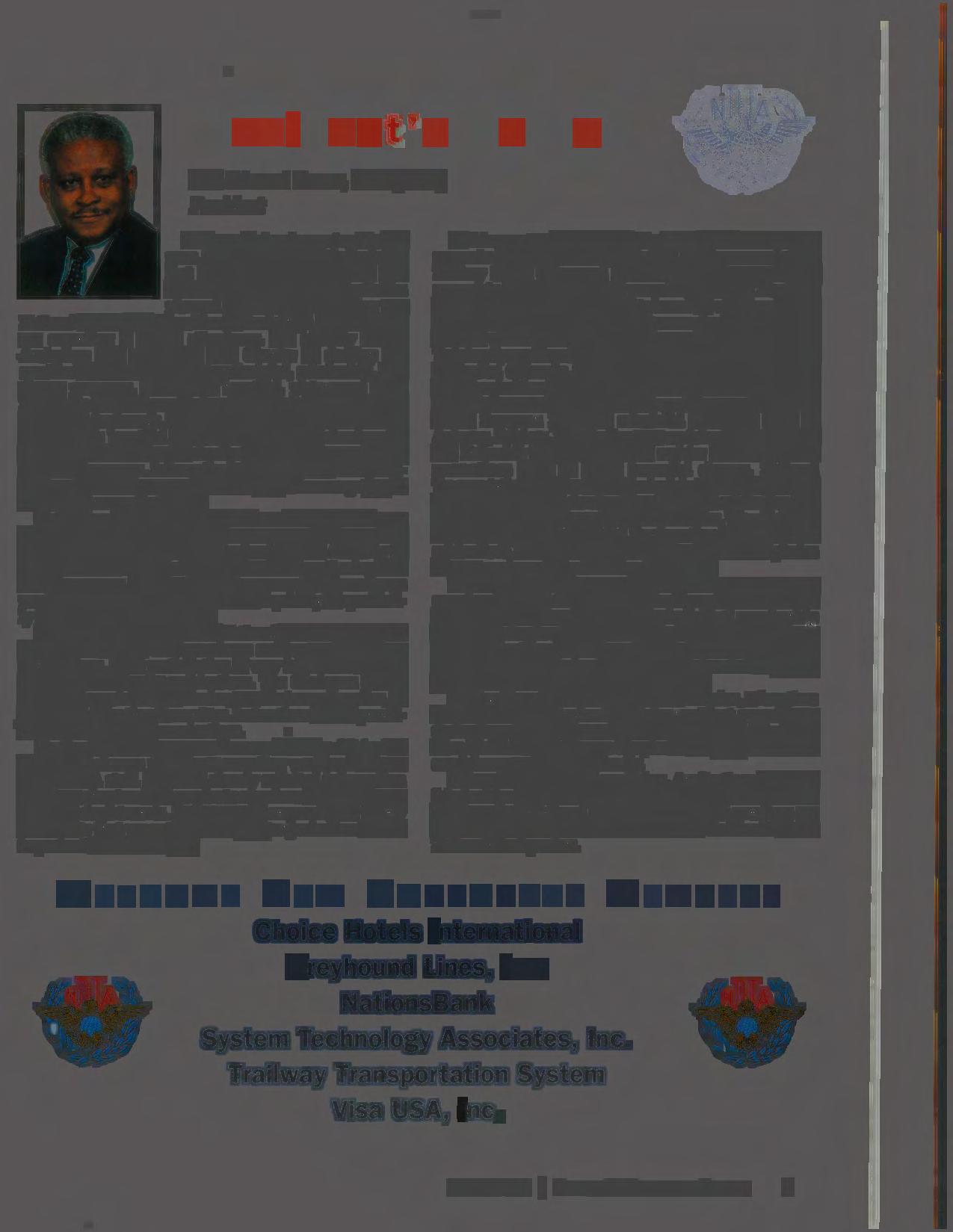
In February, we said farewell to a good friend and staunch supporter ofNDTA, VADMJim Perkins, who commanded the Military Sealift Command for the past two years. I truly appreciate all of his work to preserve a US Flag Merchant Marine. At the same time, I am pleased to welcome RADM Gordon S. Holder, the new MSC Commander. We all look forward to working with him in the years ahead. The MTMC Training Symposium will be held at the Adam's Mark Hotel in Denver, Colorado, from 29 March to 1 April, 1999. The NDTA exposition dates are 30 and 31 March. You still have time to reserve an exhibit booth. I hope to see you there. The NDTA European Forum is scheduled for 24-29 April in Antwerp, Belgium. Information was contained on page 78 of the December DTJ. You need to register and make hotel reservations early to avoid increased charges. National Transportation Week as usual is scheduled for the third week in May. It is time to develop your plans for celebrating this week with officials in your local communities. We will do our utmost to get the Presidential Proclamation in time for the celebrations, and don't forget to send us articles and photos of your programs for publication in the DTJ.
Over the past 10 years you have heard me say on many occasions that our chapters are the backbone of NDTA. I firmly believe that we can increase our individual membership base if our chapters will lead the way. I ask that each of you commit to getting at least one of your friends to become a member of NDTA during 1999. We are interested in participation from the Total Force. Will you help?
I am saddened to advise that Norm Dresden, a longtime member and past Maryland state vice-president, passed away during January. Norm was a tireless worker who led the effort to re-establish the Baltimore Chapter in the early 1980s. Our condolences go out to his family.
Let me close with two reminders. Applications for Merit Scholarships are due in April and it is also time to start to work on your National Awards. If you have questions on either of these feel free to contact Norbert Grabowski in our National Headquarters.
FIRS t TOV&
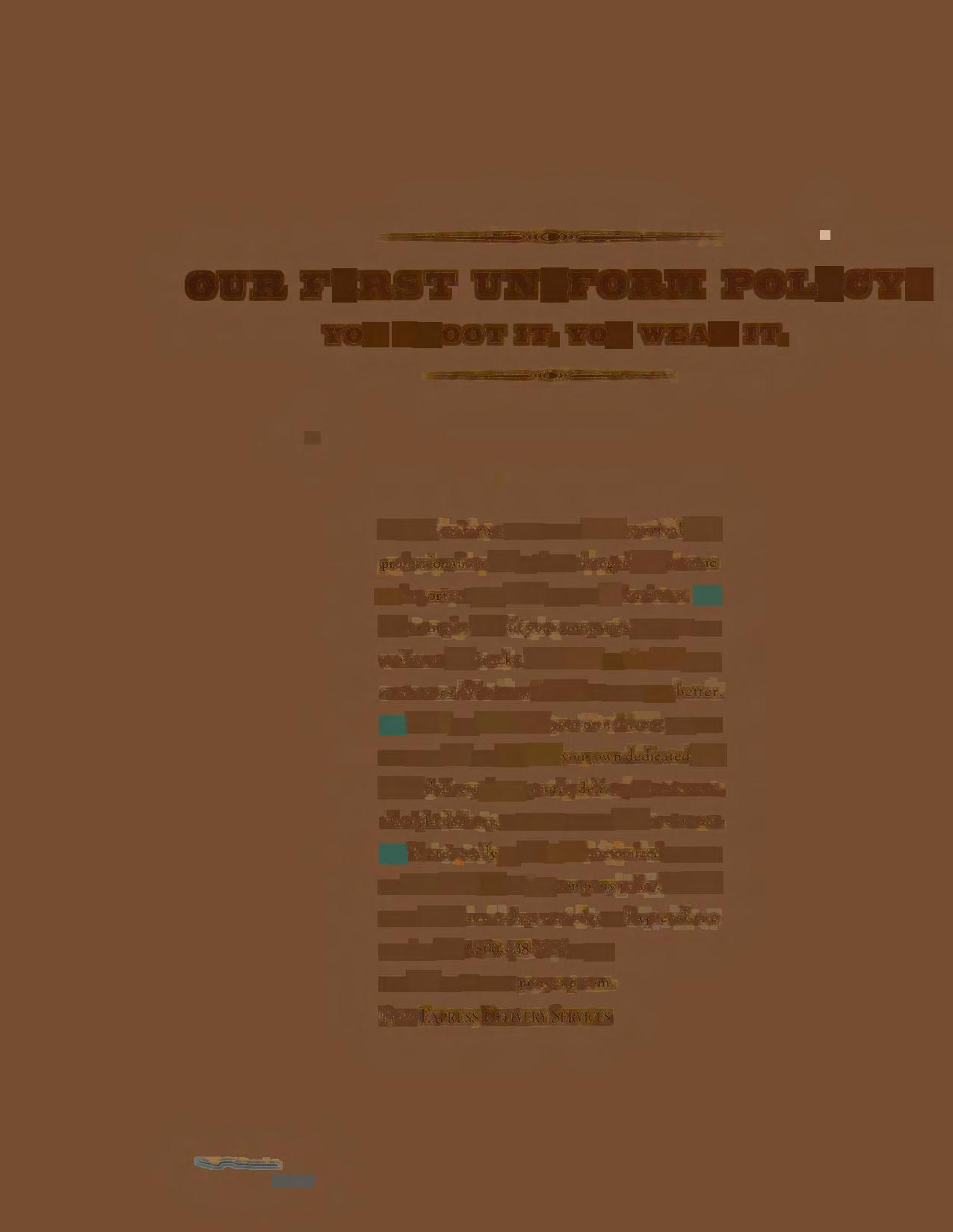
In 1860, uniforms were more 11bou professio nalism. But as times changed they became an important part of the way we do buainess; For example. we'll fit :,our company's image .to our uniforms and trucks Eve~ work op site with your cul!l1:omers. \Vhatever it takes to serve yo.u better.
<:> And if you don't n-eed )fOUTOwn driver.a, you can , use ours. You can .still have YOW own dedicated lmeb.auls. delivery times, priority ~elivery to customers, all-night d.clivery. or return aervice from customers.
<Z> Tliere's really no end to the customized services we offer. Alter all. ifs just company policy ·To learn more about same-day. next-day or ExpressLane service, call 1-800-438-0315 Ol' you

THE OFFICIAL C H OICE FOR OFFICIAL
TRAVEL .
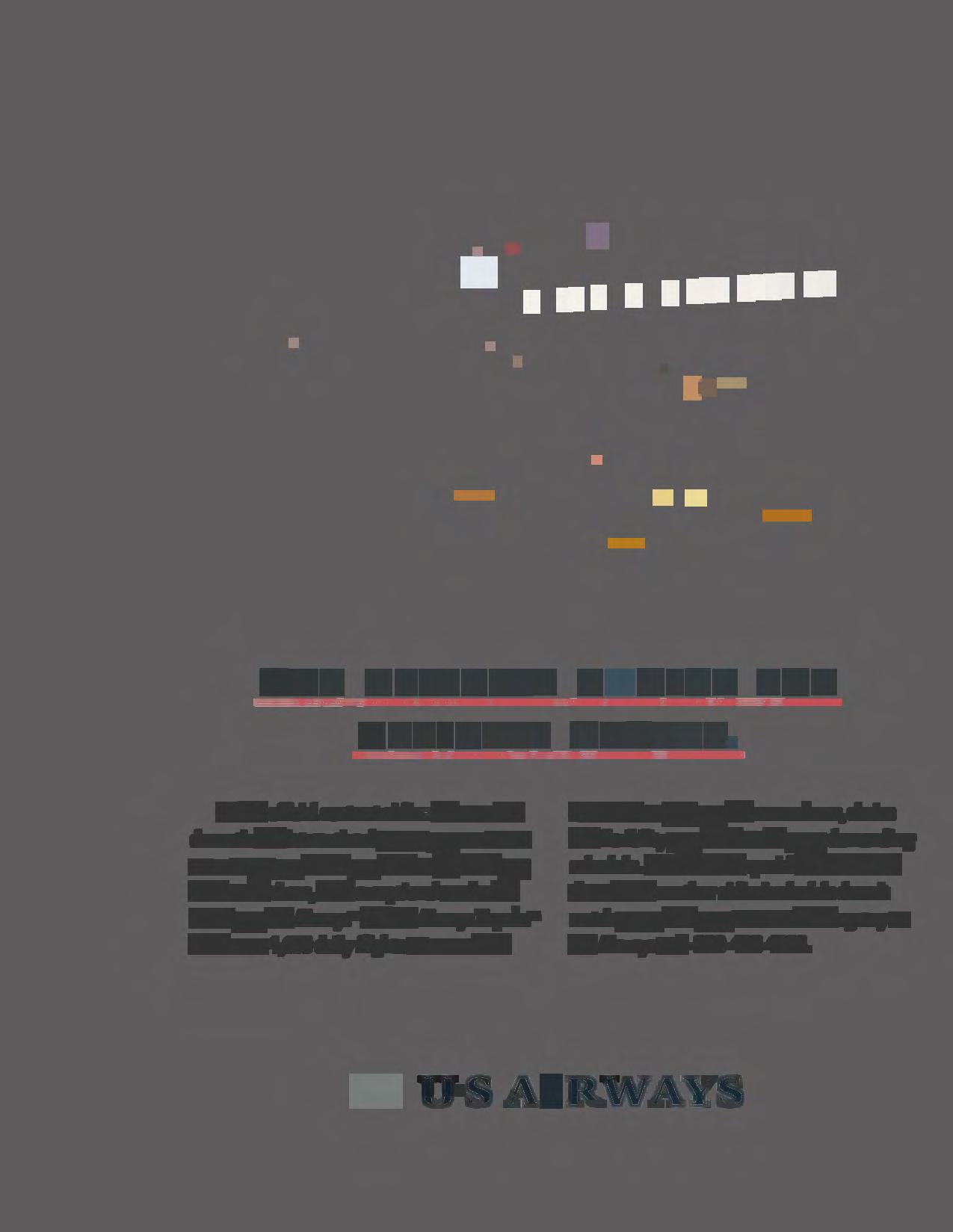
As the official contract airline for over 800 domestic and international routes, you can count on us to get you where you need to be, when you need to be there, with exceptional service the entire way. US Airwayssm and US Airways Expresssm offer over 4,600 daily flights to more than
260 cities to give you the convenience, choice and flexibility you need to fit your demanding schedule. We also offer special fares for those times when another airline's schedule doesn't match yours. Call your contract travel agency or US Airways at 1-800-428-4322.
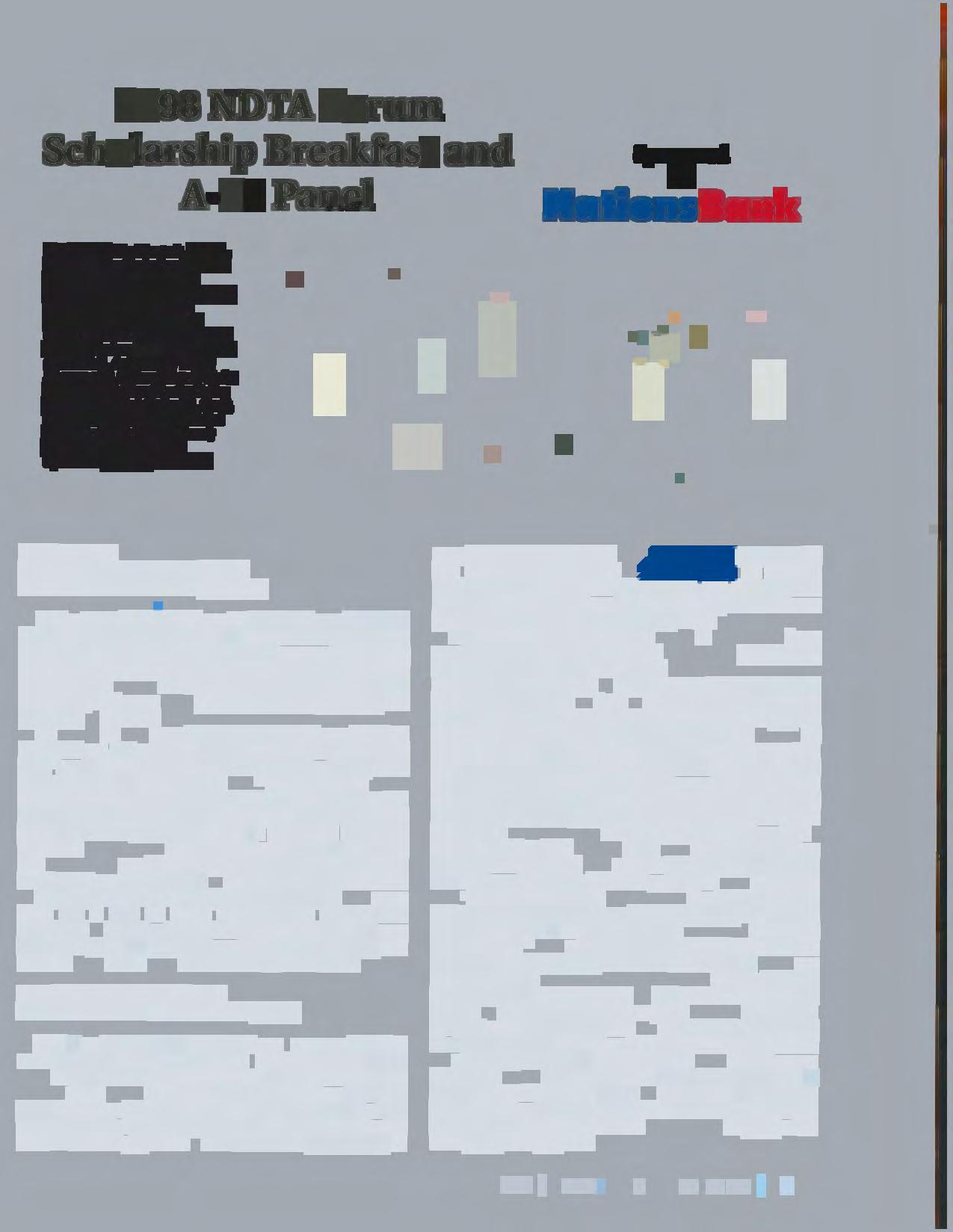
1998 NDTA Forum Scholarship Breakfast and A- 3 5 Panel
(l to r): Phil Moehlenpah, Global Sales Manager-Government, Federal Express; John Romps, Senior Associate, Price Waterhouse Coopers; CPT Morris Hatcher, USA, Training with Industry Office,, Government Transportation Services, Landstar System, Inc; Alan Estevez (Moderator), Assistant for Traffic Management, Office of Deputy Under Secretary of Defense (Transportation Policy); CPT Christopher D. Croft, USA, CINC's Action Group, United States Transportation Command; John W. Vawter, Regional Operations Manager, SatoTravel.

1998 NDTA Forum Scholarship
Breakfast and A-35 Panel
The next thing is personal education and I go back to what General Thompson said earlier at the duck race
How many of you look at that as a fundraiser. For us that duck race is more than a fundraiser, that is a great opportunity to provide money for the children that are coming up through the system so that we can get them and teach them about transportation and do those things. But for us it is an opportunity to learn; to get involved; to learn those leadership/organizational skills that will help us in our other life and jobs. This way when we get opportunities to lead, we will have those skills. At the Scott/St. Louis Chapter, we have also developed some mentoring programs. Monthly, we have CEOs, vice presidents and anybody that would want to come in and sit down and talk to us over breakfast, help us along with our ideas and it has been a great benefit to us In the fall, we are going to develop a new kind of workshops where A-35ers that are experts in certain areas will have other A-35ers in for breakfast or lunch or whatever and talk about the things that they are experts in and develop us to be better professionals.
So, NDTA plays a large role in building our future leaders in industry. I say industry in general, because you never know what we are going to be in when we get out or when we do other things. We may be in the financial industry, for instance. But if we understand how industry works, we are going to be better off. I am going to bring you to an analogy really quick. Picture a horse that is out there roaming around and you as a member are that horse, don't take offense please it is just an analogy, and there is a trough of water out here and you can't find that trough, that water is an opportunity. NDTA is providing you that guide path to get to that water of opportunity. But again we can't make you drink. NDTA can't make you drink from the water of opportunity, only you can do that. You have to take responsibility for those opportunistic situations and take charge. Because we need to get more people involved; 10% of each chapter are actually the ones that do 90% of the work and that is across the board in most organizations. Can you imagine how much we could get accomplished if we had 30% involvement? That's not much more than we have today. But, we could do so much more for the future . If we had 30% involvement, I would
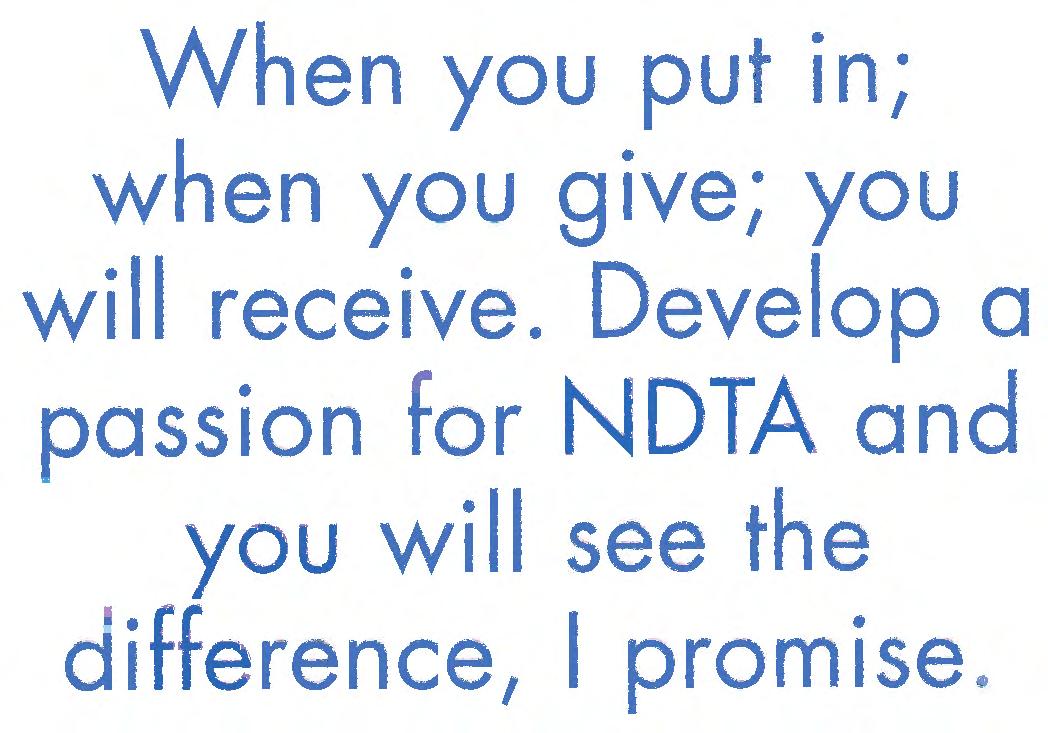

look for a system that takes you from the planning mode, where you can import your data so the supported CinC on the other end knows what is going to happen. This way everything is feeding into itself and it is a command and control system. As problem areas are identified, it goes through the course of actions for you and comes up with recommended solutions. Then, the CinCTRANS makes the decision on how to best support the warfighting CinC. We are capable of doing that today. We have many brilliant minds out there. I just think that is something we should work towards very quickly.
I want to leave you with one closing thing. A-35ers and others often ask me, "What do I get out of NDTA?" Well I go back and ask them another question. "What do you put into it?" When you put in; when you give; you will receive. Develop a passion for NDTA and you will see the difference, I promise. Thank you.
CPT Morris Hatcher, USA
Training with Industry Officer

Good morning. Thanks Alan. As I sit here and look around, one thing I have figured out, I am hungry so could someone please pass me some eggs and bacon. Since Alan has made me king for a few minutes, it is not appropriate unless I have the right headgear. On a more serious note, two weeks ago I had the opportunity to visit Jacksonville, Florida, and participate in what we call Landstar Days, which is an event for the Business Capacity Owners or BCO's, I will refer to them as drivers. This event is held annually to show our drivers how much they are appreciated and without them nothing happens. During that time, I decided to talk to some 25, 35 maybe 40 drivers to ask each of them one question. What would they do to improve the Defense Transportation System? Unexpectedly, I received similar responses The two responses that became apparent were shipment security or what we say in the motor carrier world safe havens and other response was to standardize procedures on every installation Well, that's impossible, as everyone here knows when you're dealing with all branches of the service; it's hard for us to figure out what we do between the services.
When you put in; when you give; you will receive. Develop a passion for NDTA and you will see the difference, I promise .

-MAJ Christopher Croft
So given those two topics, I decided to talk about shipment security or safe havens. Remember how frustrated you became after arriving at a military installation for the first time? Well, that feeling is no different for our drivers. Occasionally, we forget how frustrating this process is from the drivers' perspective. When drivers arrive to a military installation, finding buildings can become a disaster, especially during peak hours of traffic and on your first trip to this location. You arrive at the gate only to discover that this installation doesn't have a gate guard After traveling ten or twelve hours drivers would love to have an identifiable known safe haven. Talking with several drivers this week has given me a new outlook on what they do each and every day. When I say safe havens I am talking about a location that already exists at our installations These locations would be in well-lighted areas with access to a bathroom. The location could be inside the installation along a fence line or in a parking


Landstar System, Inc.

lot. These suggestions require very minimal man-hours, but it lets the drivers know the Department of Defense appreciates what they do, which means more than you can imagine. A small price to pay for our most valuable resource during peacetime and in war. We have drivers that are out there right now providing a service to us. Let's stop talking and practice partners in America's defense, the drivers deserve it.
The next topic I would like to discuss is educating company grade officers on the importance of industry. First, I would like to share this short story. As a second lieutenant, I started my career in Germany in the 37th Transportation Command, and it was great. However, as a transportation second lieutenant, I thought transportation worked the same in the Army all around the world. If it was military, you called and we hauled. Nevertheless, when I arrived at Fort Bragg, I learned military transporters shared the transportation world with industry. It became obvious how important the military services relied on industry. Industry is so important that during Desert Shield and Desert Storm industry hauled over 85% of our equipment to the battlefield. As a company grade officer if you haven't had the opportunity to serve in a MTMC assignment, Training with Industry position, or a joint assignment, you really don't understand the importance of our industry today. So I submit to you this morning that educating our junior grade officers can improve the Defense Transportation System. Educating the company grade officer early in his or her career is a primary key to building a partnership for the future. One day that second lieutenant will progress through the ranks serving in all command level positions, in hopes to one day make it to the ranks of becoming a general officer. If we don't start the education process as a second lieutenant then we have missed a great opportunity. The opportunity to bridge the gap between the value of a relationship with government and industry, something we call partnership. So those are the two topics I- submit to you this morning. Please take each into consideration and let's see what we can do to improve the Defense Transportation System.
One last note, early on I started to talk about best value. However, with my experience between military and industry I realize that's a very sensitive subject. Talking best value in this forum is like dropping an egg from the top of the hotel. Please, go away this morning remembering the importance of the drivers and educating our young officers early in their career on the importance of industry. Thank you.
Mr. Phil Moehlenpah Global Sales Manager Government Solutions

Thank you Alan for that warm welcome. It is really a pleasure to be back in Texas again since I recently moved from Dallas to Washington, DC. I wanted to thank General Honor for allowing me to participate in this event. This is the first time that I have been at the NDTA and a first time to participate in the A-35 panel. I do have a brief presentation that I have prepared and I want to share with you my thoughts and ideas on how the DTS can be more efficient and effective. I wanted to tell you again that I am fairly new to working with the government accounts and have been at this about two and a half
months now and one of my new representatives warned me when I first got on the job. He said that handling the government account is like drinking water out of a fire hydrant, you are going to get a little bit, but a whole lot more will be missed because of the size and complexity of the account.
I took a quote from Otter of Animal House that I thought was fitting for this presentation, "we can fight them with conventional weapons, but that would take years and cost millions of lives." There is some real truth to this quote, it will cost us too much time and too many lives, literally unless we change some of the processes that are inherent in our business. In today's marketplace, conventional wisdom does not always apply and one of the things in dealing with the government contracts that I think will help is that the government should adopt standard commercial practices wherever possible. I think some of the benefits for government would be reduced costs and would allow for quicker delivery of new service offerings from industry. For example, FedEx can offer a CPC or corporate purchasing card (i.e., the I.M.P.A.C. card) today, however because the current domestic contract has several non-standard commercial practices such as zero billing, non standard declared value and non standard default weight, we would not easily offer the CPC program to the government customer. This represents huge programming costs and many delays, which would not occur if the government adopted standard commercial practices. As we move towards these practices, industry will be able to offer new products and services much faster.
A collaborative approach to problem solving is needed. This will require us to build and maintain trust. We have to look again at the current processes in the way we do business. Our Japanese friends have a word for quality and the continuous improvement and that is kaizen. It is the spirit of kaizen which will keep us from the old saying "if it ain't broke don't fix it. 11 That doesn't apply in today's marketplace and it is important that we adopt the spirit of kaizen; that we continuously improve in the pursuit of quality. One thing that is very complex is the current payment process system for the government. I don't have all the answers but I certainly have a lot of questions. It is nobody's fault but is an opportunity where we can collectively solve the problem by working together.
I would like to point out several successes in supply chain enhancement that we need to continue with and have really been great examples of what we are doing right. The first is the DLA Premium Service operated by FedEx in Memphis. This service is a high-speed pipeline for mission critical parts. Traditional cycle times for order delivery have been dramatically reduced allowing delivery for 24hrs-48hrs anywhere in the world. This direct service has reduced costs and enhanced the warfighter's readiness. The second part is our advanced automation systems such as the powership plus server application with the DSS system. Currently being tested at several depots, the net result will enhance the intransit visibility and greatly reduce processing costs. One of the things we must consider when talking about supply chain management is the difference between the government end consumer and the commercial end consumer. The end consumer in the military is the warfighter, and there could not be a more critical supply chain.
Lastly, I want to end the presentation on leadership. I want to talk about how important it is that we demonstrate leadership, partnership, and take collaborative

Nations Bank
approach to solving our problems. We have to become quick-change artists and today's market demands that of us. We must adopt the spirit of kaizen, the continuous improvement will be vital to our success. The third point I would like to make is that logistics is a national asset. To achieve this vision, we must take the lead and take risks. A good example of this is DLA's premium service. It is a great example of where we partnered with the government and the net result was a dramatic decrease in order time from 36 days to 24-48 hours. We must use information technology to survive the rate of change in business today. Last week, I had the opportunity of being in California for the Council of Logistics Management and to quote James Moorehouse, a consultant with A T Kearney, he said that "in the last ten years 50% of all businesses are no longer here," and he said in the next ten years 90% of businesses that we know today will not be here." It is a phenomenal rate of change. Information technology is driving this and we must harness this wherever possible to support the customer, the ultimate in the end of the supply chain, the warfighter.
To close I would like to borrow a quote from Mary Lou McHugh, her motto "if you are not living on the edge, you are taking up too much space." Thank you.

John Romps Senior Associate Price Waterhouse Coopers
Thank you, Alan. All of the previous panelists have made some very good points and actually touched on some of the things I am planning to say.
However, I would like to discuss the topics from my point of view as a consultant "on the outside looking in."
The first point I would like to make is that the physical hard copy Transportation Control Movement Document (TCMD) is no longer needed in its current form. Advances in bar-coding and transponder technology combined with data warehousing techniques and secure World Wide Web connectivity can be combined to provide the same capability as the TCMD, without the need for all the data that is on the physical version of the TCMD that accompanies these packages. All that is needed for physical documentation is enough information to meet existing commerce law, and , of course, to provide information on hazardous materials and ammunition moves A Commercial Bill of Lading (CBL) or a shipping instruction is all that a carrier needs, and it should be all that DoD needs to accompany a shipment. Any data that is not on the physical document can be stored in a database that can be accessed via the Web using data obtained from a barcode or transponder, such as the transportation control number, requisition number or even the carrier tracking number in some cases.
The difficult task is getting the data into the database in the first place-and to do this as early in the shipment cycle as possible. There are many information systems already in use across the services that feed the Global Transportation Network (GTN). However, these systems need better standardization, and they need support across all the services. We are hoping that eventually the TCAIMS II system will be able to provide that service.

GTN and other DoD systems are already working with commercial carriers to receive status updates of shipments using electronic data interchange. Between data available from GTN as well as the carriers, you can practically say that the TCMD accompanying each document is almost redundant in its current form.
While I am on the topic of working with the carriers, CPT Hatcher mentioned "partnership" and "best value" as buzzwords of today, and from the outside looking in, the real focus should be not on achieving the lowest transportation cost-but rather on achieving the lowest overall logistics costs. Achieving this will require true partnering and cooperation between DoD and industry. The best way to achieve this is reducing the carrier base and implementing a core carrier program. Informing carriers when an order is placed and ready for pick-up allows the carrier to better manage its fleet by planning ahead, and getting the trucks there before the packages even arrive in some cases. This leads to lower costs for the carriers, and these lower costs can be transferred to the customers who have made this all possible-namely, DoD.
Of course, savings won ' t add up unless you provide repeat business, perhaps guaranteeing this through contract. Before anyone else has any comments on that, I would like to point out a couple of the other benefits: fewer contracts to manage, and less carrier performance to monitor with the core carrier program. A reduced number of carriers will lead to better coordination and less confusion at ports of embarkation and debarkation. It also means simpler choices for the transportation offices, and possibly a reduction of data entry errors when you have fewer items to shuffle before you actually make your carrier selection and enter your data. In some cases it makes sense to make partners throughout the entire supply chain. Partnering can be extended not just to the carriers but all the way back to our vendors. Real-time ordering is a possibility, especially if we involve the carriers through the use of Electronic Data Interchange (EDI), and of course EDI makes it all much more practical. Shipping direct from vendors will reduce inventories and therefore will reduce costs. It will be especially useful in moving perishable items directly from the vendor to our ports of embarkation, thereby bypassing any depots and warehouses as we do in practice today. I understand the current regulatory environment will not allow some the changes that I am advocating. However, this does not mean that the regulations cannot be changed.
On a closing note, the following quote that has been attributed to Ben Franklin. Whether or not he actually said it, I'm not sure, but I think it applies here very well. I paraphrase: "Revolution is only a negative term when it is in the third person: their revolution. However, when it is our revolution, it can be a just and right cause." Thank you.
Mr. John Vawter Regional Operations Manager, Pacific

Good morning I am the lucky one, I get everybody after they have had enough coffee and a little bit awake. I am going to touch on some of the things that the other people have touched on as well and it comes down



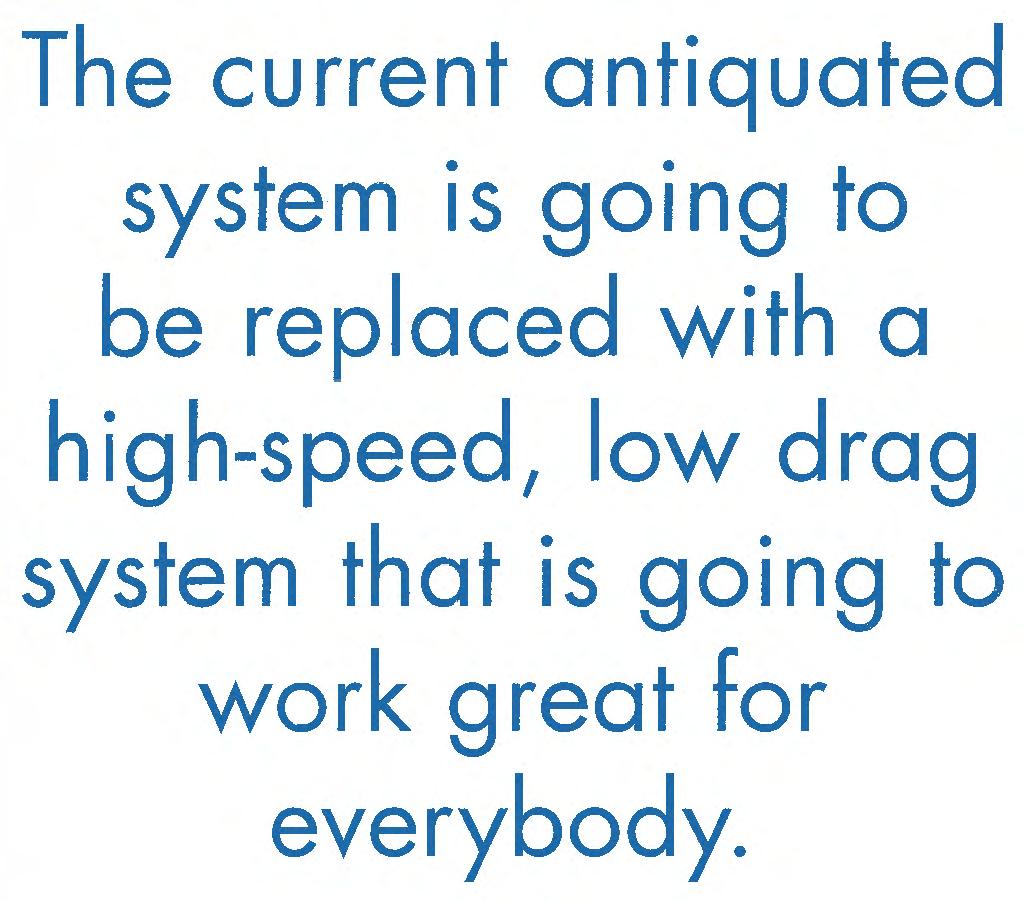
The current antiquated system is going to be replaced with a high-speed, low drag system that is going to work great for everybody.
-Mr. John Vawter

to the need for training. I would like to talk a little bit about change first. As we all know change is going to take place whether we are ready for it or not, it is going to happen. For those of us who are ready for it, it will happen quickly and without problems. For those that are not aware of it, it can be very hard to deal with. Say for instance, person works on the widgit line for fifteen years and his boss shows one day and says we are done making widgits today we start making coat hangers. It certainly is going to affect the productivity of that employee as well as the outcome to the company and it is going to continue to effect until the employee has full understanding of the new process. As managers and leaders, we have the ability to take of this in two ways: we can be proactive and we can deal with the situation through advanced training or we can be reactive and spend our days putting out fires and playing catch-up.
The topic here is what we can do to improve the Defense Transportation System. As you all know in the travel business right now we are going through some major changes. These wheels are already turning towards improvement. Within the next couple years the whole world will be going into a new system to procure travel. The current antiquated system is going to be thrown out to be replaced with a high-speed, low drag system that is going to work great for everybody. As a matter of fact, there are a lot of people in this room that have been involved with the design of that new system. This is going to be something that will take us by storm. It is going to be good and faster for the users. The travelers are going to be able to make their travel quicker. On the finance side of it we will get paid quicker. And of course it is going to save on paper. Most of have been around the system and involved with the development, we have a pretty good understanding of what is going on and how things are supposed to work in the future. Implementation as far as we see will go very well. What about the guy who is going to have to use the system? What about the guy who is going to have to wake one day and says okay here is the new system. I need to make
some travel arrangements. How do I do that? These are the type of people over the past years that have been completely happy taking the travel orders down to the local transportation office and having them make the arrangements for them. These are the people that are to take this change with not so much ease.
We all understand the need for advance training. I think all of us within the passenger travel side understand that to make this transition smoothly advanced training is needed. I say we need to start this now. First we need to hit everybody coming right out of boot camp. After all, these are the people that are going to be using the system for life. They are also the people who will be the easiest to train because they are not caught up in a paradigm like the rest of us on how things did work. Authorizing officials need to understand the travel system because they provide the checks and balances. The next thing is to make it the responsibility of each installation commander to ensure that his administration and finance people and unit commanders all have a fully working understanding of the implementation process of this new system. This could be accomplished by a couple of ways. I think probably the best one is to get a Military Traffic Management Command person to come out and schedule training at the installations. I think that is a good way to cover it. Finally, there is a need to make sure that the traffic management officers and commercial travel officers have a full understanding of the process prior to the implementation. Of course a lot of this direction is going to come through the commercial travel officer contracts and it is going to be pretty clear on what our role is. However as soon as the first contract is set up, everyone is going to be affected. That is everyone who is going to be receiving passengers from that area. So it is necessary for all of us to understand how the system is going to work in advance so we can seamlessly process those people as they are coming in our direction.
To touch a little bit on the curriculum. Some of the things that need to be hit as far as the training goes. Of course software training, it is going to be computer based. It is going to be something that is pretty easy to teach. The different ways of payment. There is going to be several types of credit cards that can be used (i.e., the unit card, I.M.P.A.C. Cards, centrally billed cards and individual cards) and a lot of questions that will come up about this. When do we use them? What type of reports are they going to generate? How do we use those reports? Thirdly and probably most importantly, is that the authorizing authorities are going to have to be trained with a working knowledge of all the regulations that pertain. In the past it has always been the transportation people that have been the cornerstone to answer these questions and make sure that the GTR, JFTR and other regulations are complied with. These people are going to have to be taught how to decipher those regulations including the ]TR, the service regulations as well as the AMC procedures and have a good understanding of the GSA city/pair contracts.
In closing, I just want to make clear that I believe it is our responsibility as transportation experts and creators of this new system to make sure that we are ready and the people that are going to use the system are ready for this imminent change and that they are fully prepared and trained. This will ensure the success of the system and create less confusion for us and the user at the time of implementation. Thank you. DTJ

The History (A Stately Strife-Born Alma-Mater)
Over fifty years ago, America became engaged in the most dramatic conflict in human history. World War II challenged the nation's capabilities both at home and abroad. Not only was the United States military put to tJ-:te test, but America's transportation system also became critical to the success of the war effort. Prior to and during the war, America's freight transportation system consisted primarily of railroads and their links, inland and coastal ports, and short haul trucking over a limited capacity road system. Merchant vessels had relatively small capacity (as compared to modern vessels) and loading and discharge activities generally required many days or even weeks of port stay. On-dock warehousing was essential for most non-bulk cargo operations. In a sense, the warehouse served as the dividing line between modes of transportation-between the operations of ships from those of trucks and trucks from trains. Except for the cargo they carried, transportation systems and the people who managed them had little in common and limited reason to interact.
Recognizing the need for a stronger sealift transportation system, in light of the brewing conflict that existed in Europe, Congress passed the Merchant Marine Act of 1936. The Act created a strong shipbuilding base by initiating a massive building campaign of new merchant vessels. After the start of World War II, the building program was accelerated and altogether nearly 5,700 merchant vessels were constructed to supply the war effort with troops and material. The performance of the revitalized American Merchant Marine during the War is legendary. In order to meet the high demand for properly trained and qualified ship's officers to crew the ships built under the '36 Act and during the War, the Merchant Marine Act also called for the establishment of a fourth federal Academy, the United States Merchant Marine Academy (USMMA). The mission
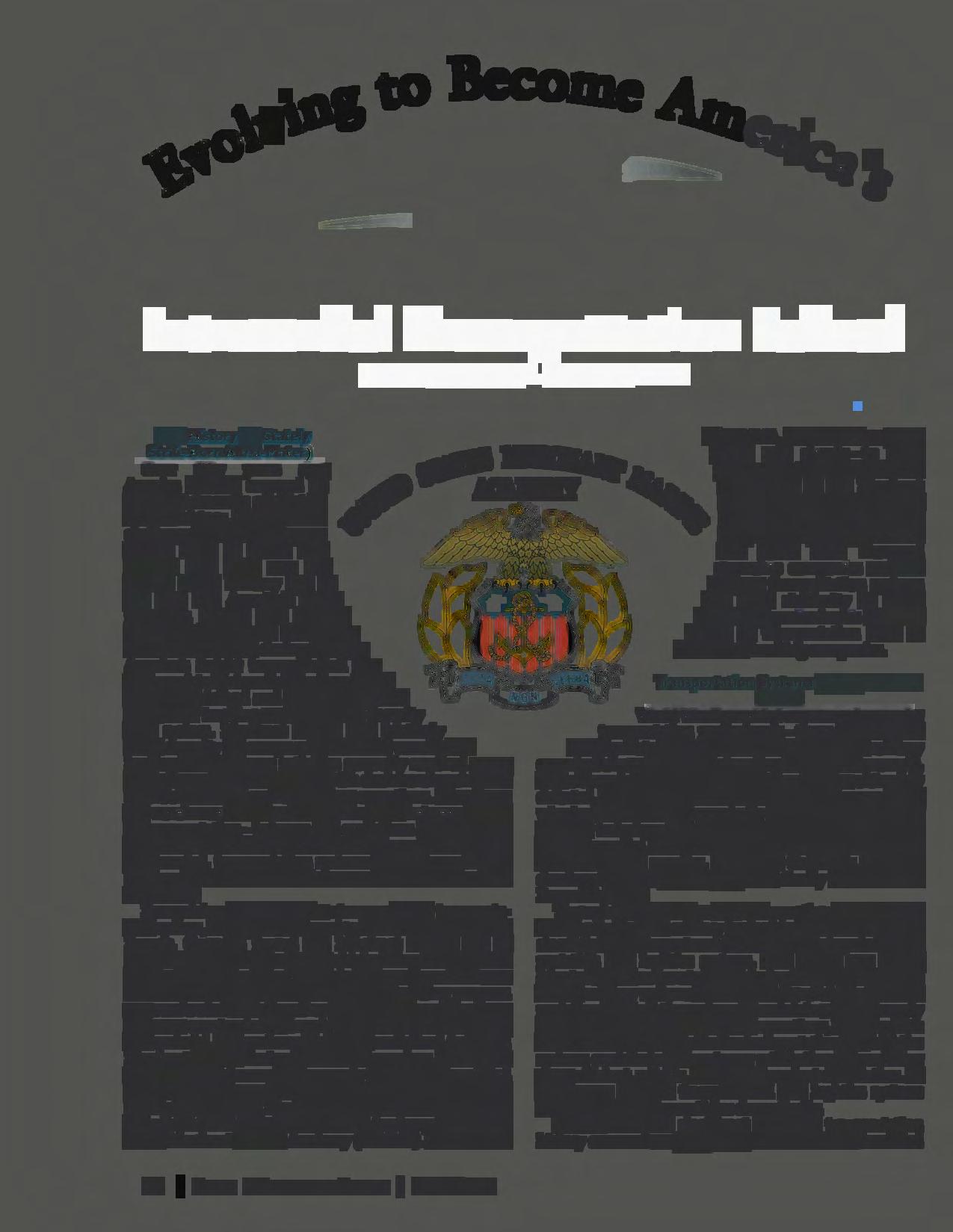
of USMMA, also known as Kings Point, was simple-to train young men to become officers and leaders in the Merchant Marine and armed forces. At the time, the skills and knowledge needed by ship's officers and those who managed steamship companies or military sea transportation systems had little similarity to those needed by professionals in other modes of transportation such as railroad or trucking companies.
Transportation Systems Slowly Become Linked
World War II provided enormous lessons for transportation professionals-those who worked in the private sector and those who worked for military organizations as well. It is interesting to note, for example, that although Field Marshal Erwin Rommel was ultimately defeated, he only lost one battle. The German general kept winning because of the superiority of the Panzer tank. The German technique was to fight, win, and then return to base for supplies. The British on the other hand, moved forward with their supplies. When the Centurion tank was developed by the British, they were finally able to defeat Rommel's forces.
Through lessons such as this and countless others, World War II provided the military leadership with a clear understanding of the importance and value of integrated transportation and logistics systems. This lesson was slowly adopted in the corporate sector during the 1950's and 60's. Where military systems would focus on reliability of transportation and logistics systems to maintain a steady supply of troops and materiel in combat operations, the corporate world found that more effective transportation and logistics systems contributed to customer satisfaction by providing more efficient, reliable, and timely product distribution. In both cases, efficient transportation and logistics systems also reduced costs, sometimes dramatically.
One of the most significant events in transportation history occurred on April 26th, 1956 when the modified
T-2 Tanker IDEAL X, carrying 58 trailer vans on specially adapted decks, sailed from Newark, New Jersey to Houston, Texas. The container revolution had begun. Trucking executive Malcom McLean may take credit as a primary leader in the container revolution. It was through his initiative that the IDEAL X experiment began. Subsequently, through the Pan Atlantic Steamship Corporation, McLean converted several vessels to container ships and eventually built new vessels. The company name was eventually changed to Sea-Land Service, Inc. and the company has enjoyed enormous success for decades.
The advantages of containerization such as reduced pilferage, more efficient loading and discharge times, less cargo damage, and a lowering of cargo handling costs may
Ensuring that the logistics process within lntermodal transportation of cargo follows a 11seamless" pattern has been one of the biggest challenges of the Intermodal revolution.

seem obvious today, but the adaptation of containerization by the maritime industry was very slow. It wasn't until 1966 that the first transatlantic container service was inaugurated. There were numerous reasons for the slow acceptance of containerization, including the high capital costs associated with building container vessels and developing the required port infrastructure. Government and military organizations also frowned on containerization because it was perceived that container vessels would be less flexible for wartime use. Labor also discouraged adaptation of containerization based on a fear that jobs would be lost in the process.
The first decade of the container revolution constituted mostly just that-a container revolution, with few landsea intermodal aspects. Intermodality was confined primarily to local pickup and delivery of containers by trucks. If the container revolution was slow in proceeding, the intermodal revolution was even slower. Competitive animosity between land and sea modes, combined with institutional lethargy, caused land-sea intermodality to progress slowly. Strictly speaking, intermodal freight transportation is the seamless and continuous door-to-door transportation of freight by two or more transportation modes. It is logistically linked and handled as one continuous through-shipment under the authority of a single freight bill. The cargo remains in the same container throughout the entire trip. In addition, intermodal freight transportation is not just the hardware or equipment involved with the freight movement, it is the process itself. It is this process or systems approach that has become an integral part of what is commonly called logistics management.*
Ensuring that the logistics process within intermodal
Evidence of the Academy's multi-service emphasis is, from left to right: GYSgt Gibbons, USMC, ENS Ash, NOAA Corps, 2LT Hanna, USAR ('97), MIDN Nicholls, 4/C ('02), MIDN LT Collins, 1/C ('99), MIDN Harrison, 4/C ('02), LT Ramos, USCG ('87), LT Holden, USNR ('92)
transportation of cargo follows a "seamless" pattern has been one of the biggest challenges of the intermodal revolution. The history of intermodality is inextricably involved with federal and state legislation, and international agreements. Considering the geographic vastness of the United States, efficient transportation of import and export cargoes relies heavily on the nation's rail network as well as the expansive road and truck system. Unfortunately, the abuses of the railroad monopolies during the latter half of the nineteenth century resulted in strong government regulatory controls. (This also set precedence for regulating other modes in later years.) As the practice of intermodality has matured (fostered in part by the need for efficient military transportation), government regulation of the transportation industry has increasingly been regarded as a hindrance to seamless intermodal transportation. Since the late 1970's, the gradual deregulation of U.S. transportation and other related commercial activities has helped intermodalism develop to its full potential.*
During the 1990's, better integration of different modes of transportation has successfully occurred. In the words of Bob Connor, Vice President of Logistics for BDP International, "Ten years ago, the majority of the freight we handled was by ship only. Today, 80% of the freight we manage is intermodal. Shippers no longer look for providers to handle plant-to-plant or port-to-port moves which only involve one mode of transportation. They want us to manage the entire process from plant to customer. 11

data shows that 95% of America's imports and exports move through U.S. ports aboard commercial vessels. At a recent maritime conference, Secretary of Transportation Rodney Slater noted that, 11 The U.S. maritime transportation system needs to expect a doubling of trade volume over the next two decades. 11 Secretary Slater further noted that, "Our greatest challenge is to build a transportation system that is international in reach, intermodal in form, intelligent in character, and inclusive in nature. 11
Concurrent with the nation's economic dependence on commercial intermodal transportation systems, the U.S. military relies heavily on intermodal transportation systems to project military power around the world.
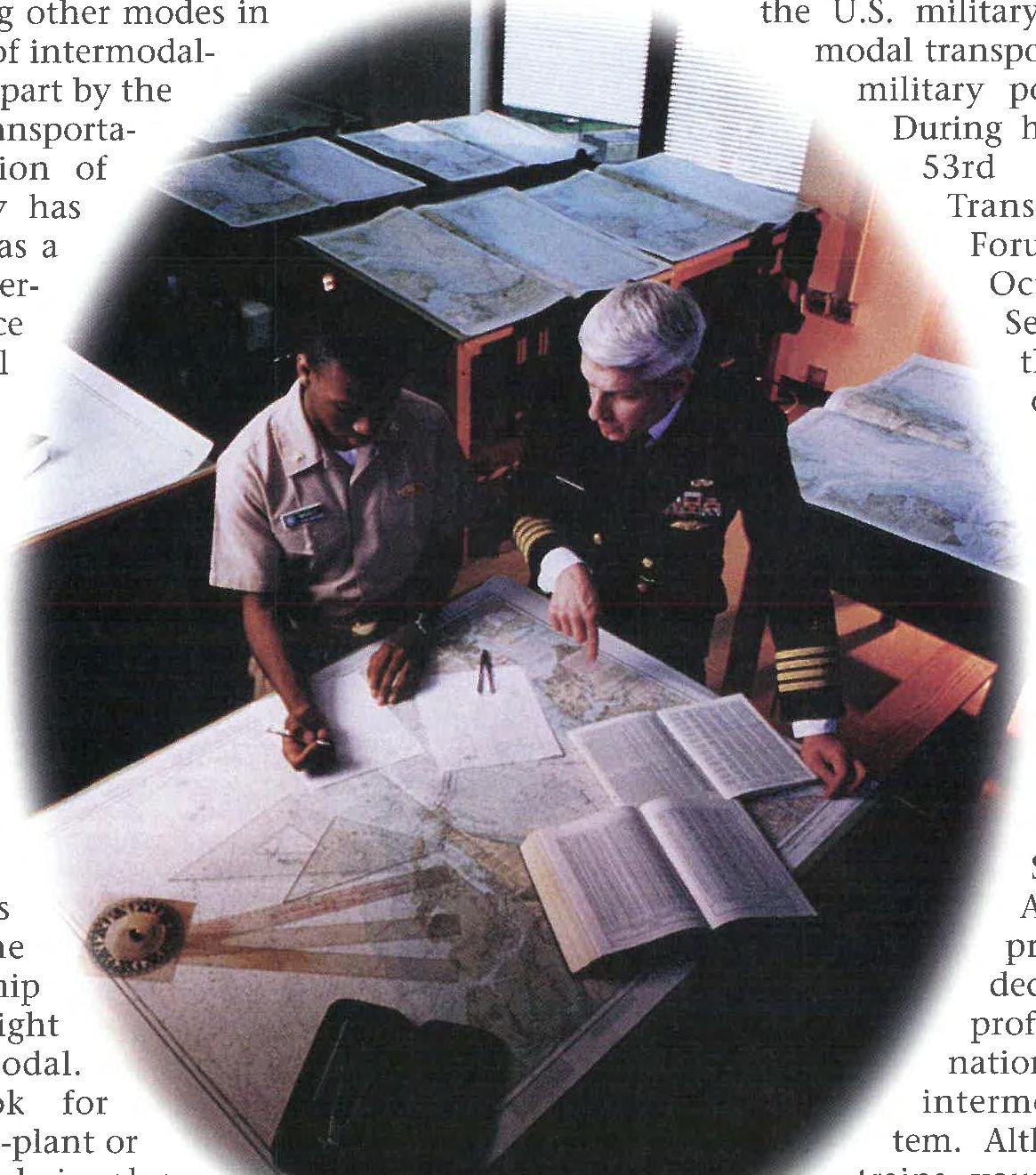
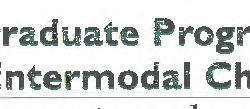



USMMA's Undergraduate Program (Evolving to Meet the lntermodal Challenge)
As the twentieth century draws to a close, effective and efficient intermodal freight transportation is no longer viewed as an impossible dream. America's transportation system has experienced a series of revolutions that have created a modern intermodal transportation system. Stateof-the-art hardware, software, and new and innovative intermodal transportation technologies must be managed by those who possess the skills, knowledge, and understanding of how modes of transportation operate and how they are linked in such a way that maximum efficiency is realized.
Unfortunately, few Americans are aware of the critical importance that transportation and logistics plays in the maintenance and growth of the American economy. Nor do most people perceive the relationship of transportation and logistics with military might. As the twenty-first century dawns, America's dependence on the nation ' s transportation resources grows. 1998 Maritime Administration

During his keynote speech at the 53rd Annual NDTA Transportation and Logistics Forum and Exposition in October 1998, Defense Secretary Cohen affirmed that, "Eighty-five percent of our DoD transportation support, in peace and in war, comes from our commercial partners. Our military cannot serve America without your (commercial transportation industry) support and transport service. 11
Responding to these challenges, the United States Merchant Marine Academy has evolved its program during the past decade to meet the needs of professionals who serve the nation's strategic and economic intermodal transportation system. Although the Academy still trains young men and women to become licensed Merchant Marine mates and engineers, and officers in the armed forces, (two vital endeavors), the Academy's undergraduate curriculum includes academic majors that support the broader needs of the transportation industry at large. Clearly stated, the current mission of USMMA is:
"To educate and graduate officers and leaders of honor and integrity who are dedicated to serving the economic and defense interests of the United States in our armed forces and Merchant Marine and who will contribute to an intermodal transportation system that effectively ties America together. 11
Undergraduate students (midshipmen) are congressionally nominated and come from all fifty states. Operated by the U.S. Department of Transportation, Maritime Administration, Kings Point has broadened its mission to better serve all sectors of the transportation industry. The Academy's Marine Transportation Department, for example, now offers a major in logistics and intermodal transportation. The key objective of this new program is to develop leaders for tomorrow's commercial and defense intermodal transportation systems. Although the Academy retains its core competencies in the maritime and engineering disciplines, the broadening of the cur-



CENTER FOR GLOBAL LOGISTICS AND TRANSPORTATION
Jnited States Merchant Marine Academy (USMMA) s one of the five federal service academies, the nation's >remier maritime educational institution, and a leader in ntermodal transportation studies.
['he Center for Global Logistics and Transportation takes ull advantage of the magnificent campus and outstanding earning environment at the Academy as well as the modern, 1rofessional, classroom spaces and laboratory facilities.
Up coming Cours es
Strategic lntermodal Transportation (2 weeks)
Course Dates: May 10-21, 1999
September 13-24, 1999
December 6-17, 1999
Location: USMMA Kings Point, NY
Tuition: $1790
• Over 15 speakers including top Academy faculty, industry & military experts, and leading professors from academia.
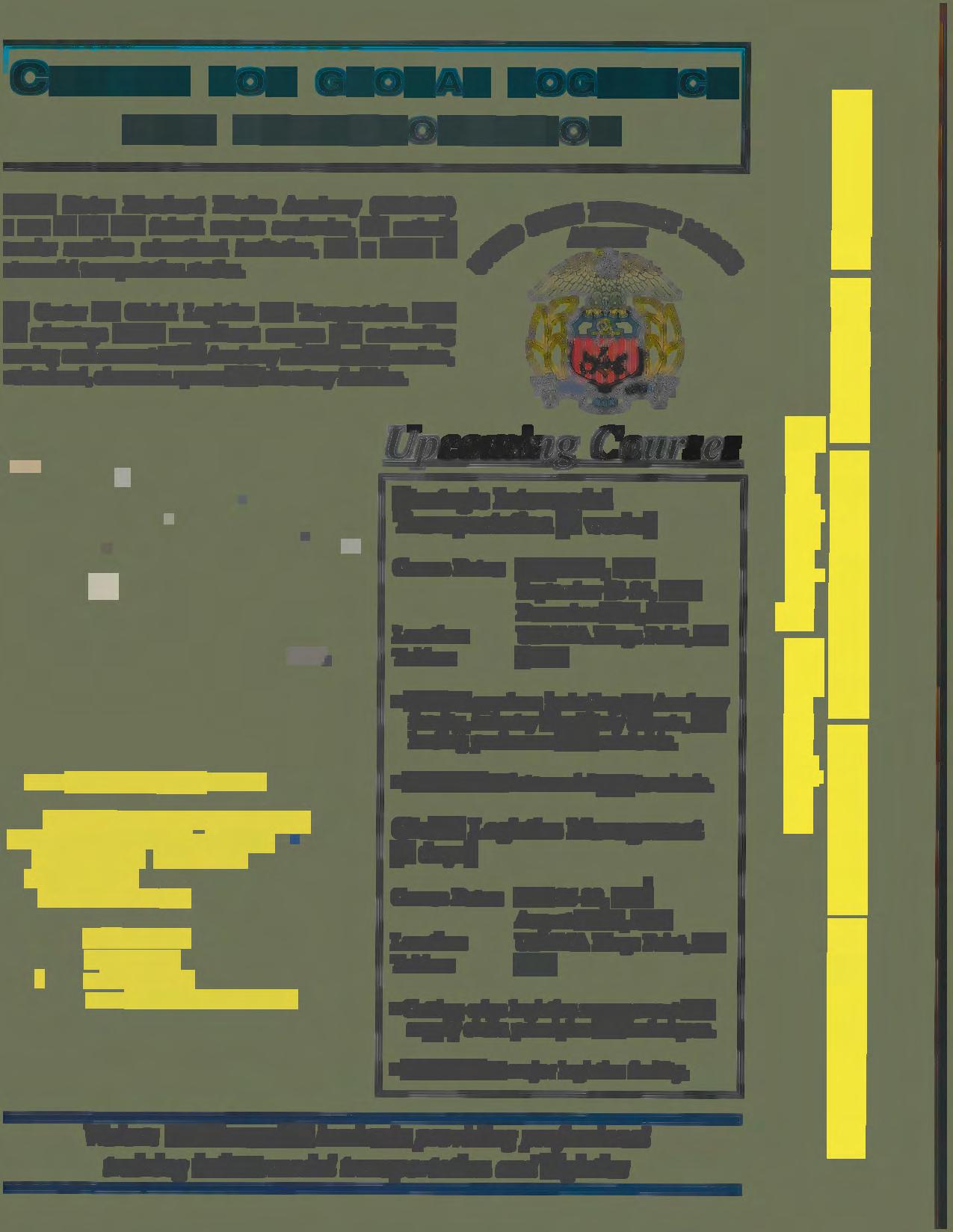
or more information, please contact:
:enter !'or Glohal Logistics and Transportation
'nitccl States Mcrch;int :V1arine Academy
'nntinuing Educalion - Samuels Hall 00 Sleamhoat Road
'inµs Point NY I 1024-1()90
elephone: 516.773.5165
·acsimilc: 51 (J.77.1.'.1353
-mail: ce0"usmma.edu
ltcrnl'l: www.usmrna.edu/cc/umed.htm
• Field visit to intermodal port terminals.
Global Logistics Management (5 days)
Course Dates: June 25-29, 1999 August 23-27, 1999
Location: USMMA Kings Point, NY
Tuition: $985
• Cutting-edge logistics management and supply chain principles and techniques.
• Field visit to major logistics facility.
Vision: To be a world leader in providing professional training in intermodal transportation and logistics
riculum, complemented by student sea-year and corporate internship experiences, produces graduates who are valuable assets in private-sector and military organizations in all modes of transportation. With America's growing dependence on efficient and effective intermodal transportation systems as the 21st Century approaches, USMMA graduates have the requisite skills and education to help serve the strategic and economic transportation interests of the nation . The Academy's close ties to both private-sector and military transportation organizations make it uniquely suited to its role as America's "Transportation Academy."
lntermodalism's
Greatest Challenge (Awareness of the Importance of Education and Training)
Although there have been dramatic improvements in intermodal hardware (such as rail cars, cargo handling equipment, and seagoing vessels), further advancements will probably be incremental or come about more slowly. Further innovations in the industry will proceed in an evolutionary manner since changes and modernization of new intermodal equipment, however progressive, are dependent on enhancements in infrastructure, including facilities, access, and information. The adaptation, for example, of high-capacity and/or high-speed container vessels is contingent on the development of larger, costeffective ports and terminal facilities capable of handling larger volumes of cargo. Accordingly, it is also contingent on higher-capacity rail and road links.
During the past several years, the development of advanced information technologies is also producing yet another revolution in the transportation industry. This includes electronic data interchange-based systems, e-mail, the internet, satellite tracking systems, intelligent transportation systems (ITS) and other electronic on-line services that will provide intermodal companies and their customers with the ability to make faster, more accurate, and informed decisions in response to emerging opportunities.
The combination of technological revolutions in transportation hardware, software, and information systems combined with the increasing need for all the modes of transportation to work in synergy has created the need for a new breed of transportation professional. Transportation Secretary Rodney Slater has stated. "We are at a crossroads

men , p, cal, 61tands-on" education.
in the transportation field. Much of the nation's seasoned workforce is retiring. Meanwhile, the demand for both traditional and new skills is expanding. The federal government, state transportation departments, the education community, and the private sector have a common interest in developing the human resources needed to design, deploy, operate and maintain an integrated and seamless national transportation system for America in the next century."
As the decade of the nineties draws to a close, the human factor in operating America's effective and efficient intermodal transportation system becomes even more crucial. In addition to providing the proper education resources for entry-level leaders and managers, the transportation industry-government, military, and commercial-must find ways to re-educate and re-train seasoned employees. Just as medical professionals need constant training throughout their careers to understand and adopt new technologies and practices, so too do transportation professionals. The transportation method and system of yesterday will not serve the urgent transportation needs of tomorrow. Lillian Borrone, Director of Port fommerce fo~ the Port of New York/New Jersey notes that, If we (Amenca) expect to excel and move into the top level of competition (in transportation)-whether public or private, we need to think, plan and act to prepare for the challenges of tomorrow and the day after and every day after that. The key is education, innovation, and practical application. Training in the intermodal/logistics management disciplines is essential."
The intermodal transportation industry must accept that experience alone does not enable the professional to stay current with the changes that are critical in keeping a transportation organization efficient and competitive. For many organizations, this is hard to accept. A well-recognized transportation consultant, Ted Prince, remarked, 11 ••• Some companies may view continuing education and training as essential tools in today's environment. They will have a bettermotivated and better-trained work force Companies that spend very little in employee development will probably continue to experience the high costs of employee turnoverand compliment themselves on saving money-yet remain unaware of the continued erosion of their company's service."
PreP-ared Toda-Y- for Your Shipments Tomorrow
All-American Fleet, All-American Service
As one of the leading U.S.flag carriers in the Pacific, Matson represents American innovation at its best.
Matson's historic introduction of containerization in 1958 led the way in Pacific shipping.It launched a container freight system that became a model worldwide. Innovations by American carriers have greatly shortened the distance between si:ippliers and manufacturers - and manufacturers and customers. The bottom line: modern, efficient transportation of superior quality and value. That's the American way.
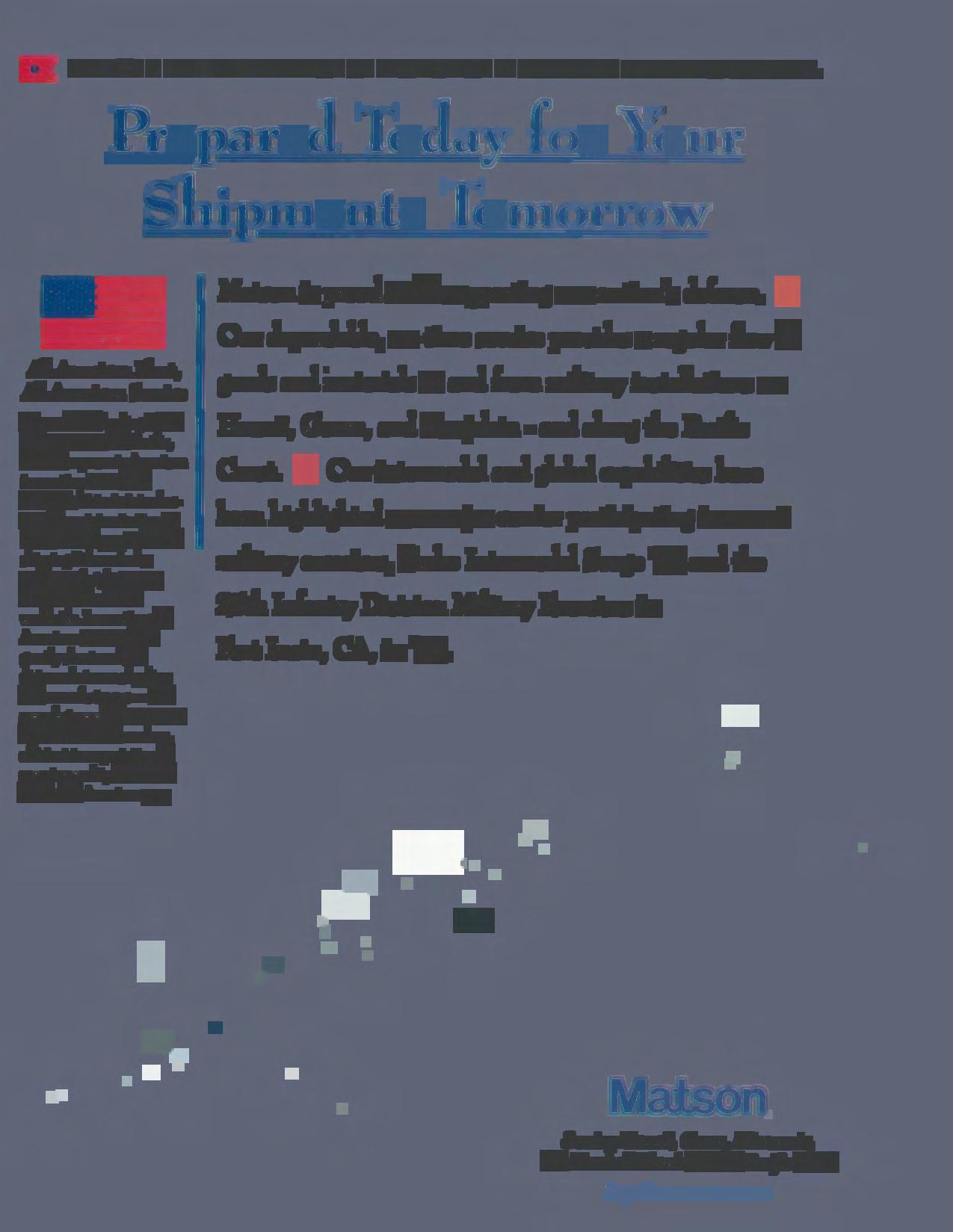
Matson is proud to be supporting our nation's defense. Fb Our dependable, on-time service provides a regular flow of goods and materials to and from military installations on Hawaii, Guam, and Kwajalein - and along the Pacific Coast. Fb Our intermodal and global capabilities have been highlighted as a major carrier participating in recent military exercises, Turbo Intermodal Surge '97 and the 25th Infantry Division Military Exercises in Fort Irwin, CA, in '98.
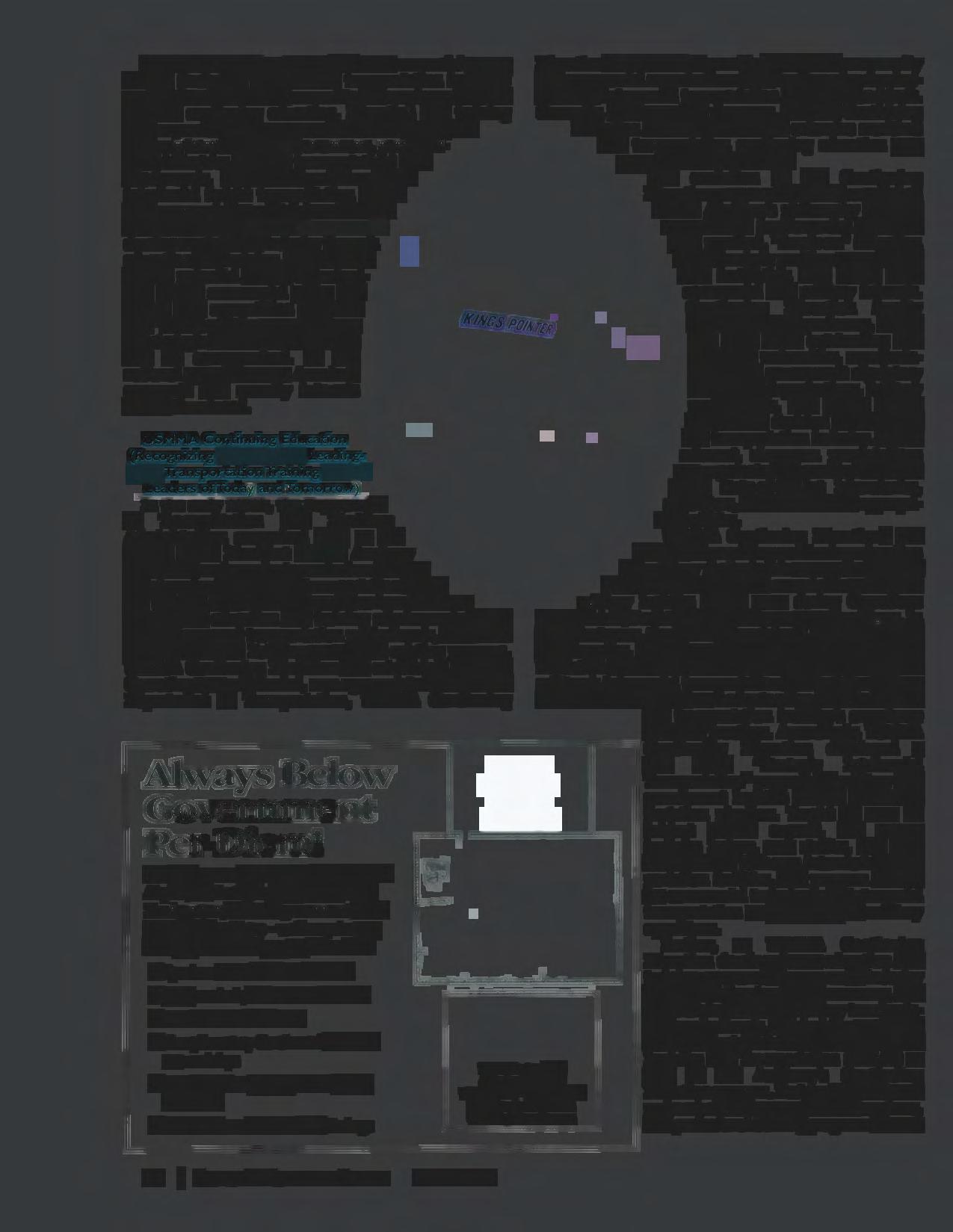
Mr. Prince is right on target. The most successful corporations (including those in the transportation industry) are the ones that remain committed to employee re-training and continuing education. Education and training may expend limited resources in the short term, but the long-term benefits are enormous, particularly in industries (such as transportation) that are dynamic. If users and providers of the intermodal freight transportation industry (commercial or military) are not able to increase their level of awareness of developments in the industry through education and training, they will suffer the potential loss of opportunities . In the commercial sense , this means "the competition may win out." In the military sense, it means the strategic interests of the nation will be compromis e d. In the national sense, it means America's economic and security interests will be threatened.
USMMA Continuing Education (Recognizing the Need for LeadingEdge Transportation Training for the Leaders ofToday and Tomorrow)
In the early 1990's, the Department of Transportation and Maritime Administration recognized that, as the United States Merchant Marine Academy evolved its undergraduate curriculum to meet the changing needs in the transportation industry, USMMA also needed to use its unique resources to meet the education and training requirements of the nation's seasoned transportation professionals, both military and civilian . Building on a small existing program, USMMA Continuing Education was established in 1994 Operating as a self-funded, non-appropriated fund of the Department of Transportation , USMMA Continuing
Always Below Govenunent Per-Diem.!
Not only are we just minutes from National Airport, the Pentagon , Navy Annex , D.I.A. Headquarters , and most government buildings, as well as Metro-we 'll surprise you with just how much you get for so little.
Spacious suites with full kitchens
Pool , sundeck, and exercise facilities
Free Cable 1V witl1 HBO
+ Complimentary Continental Breakfast on weekdays
Education's mission is to provide the defense community and commercial organizations with leading-edge developments in intermodal transportation and related subjects. Currently, with over 100 programs, USMMA Continuing Education now offers the most extensive maritime and transportation continuing education program in the United States.
The evolution of the Continuing Education program at USMMA was linked to the Academy's philosophy of classroom lecture supplemented by intensive, practical, "hands-on" education and its unique position as an education institution that serves both commercial and military interests. Continuing Education faculty include USMMA professors, academia from other outstanding colleges and universities, representatives from government regulatory and policy organizations, military professionals, and expert practitioners and decision makers from the transportation industry. Where relevant, classroom presentations are augmented by practical exercises using state-of-the-art laboratories, simulators, and field visits to appropriate facilities.
USMMA Continuing Education's initial role in providing continuing education for military professionals came as a result of the Persian Gulf War. As remarkable as the U.S. military logistics efforts were during Operations Desert Shield/D esert Storm, there were many problems. In many instances, thousands of containers, loaded with military supplies, arrived on the dock in the Gulf with no indication of their contents. It soon became clear that the military's intermodal transportation and logistics personnel could benefit from an understanding of the commercial transportation industry 's experience and best practices. Accordingly, USMMA Continuing Education developed a two week "Strategic Intermodal Transportation" program for military and gov ernment logistics officers and transportation planners. Taught by ov e r 15 subject matter experts, the course includes lecture, case studies, and field visits to New York-area intermodal transportation facilities The program focuses on commercial techniques in intermodal transportation as they apply to military operations.
Further, as USMMA Continuing Education developed new education and training programs in response to industry trends, the growing global economy, and the evolving needs of military transportation professionals , the decision was made in 1996 to establish the Center for Global Logistics and Transportation (CGLAT) as part of the Academy's Continuing Education program. Designed to offer comprehensive short courses, focused seminars, and professional training programs in areas


of logistics management, intermodal transportation, maritime business, port operations, and other related topics, the Center's vision is:
"To be a world leader in providing professional training in intermodal transportation and logistics."
The mission of the Center is to offer education and training programs that provide transportation professionals with leading-edge developments in the industry so that they can help solve the problems facing intermodal transportation systems.
Since 1996, over a dozen key transportation and trade associations and organizations have established partnerships with USMMA's Center for Global Logistics and Transportation. Together with its partners, the Center has
developed dozens of education and training programs in an effort to improve America's overall intermodal transportation system for the 21st century.
In addition to the Strategic Intermodal Transportation course, popular short courses for military professionals include two-week programs in Port and Terminal Operations, Marine Cargo and Stowage Operations, Transportation and Storage of Hazardous Materials, and five-day programs in Global Logistics Management and Cargo Security Management.
In addition to the commercial transportation industry, USMMA now serves as an important education and training resource for USTRANSCOM, MTMC, MSC, U.S. intelligence agencies, Army and Navy Reserve components, the Coast Guard, and many other government and military organizations. In the words of a military professional who recently completed a USMMA short course, "The value of the USMMA approach is that the Academy has one foot firmly planted in the commercial transportation industry and the other foot firmly planted in the understanding of military-specific transportation needs."
In World War II, the combination of commercial and military ingenuity enabled the wartime transportation effort to succeed spectacularly. The problems facing America's military and commercial intermodal transportation system are as challenging today as they were more than a half-century ago, if not more so. To remain competitive in the global mar-
ketplace and to ensure that the military can project force to trouble spots around the world, the nation must have an intermodal transportation system second to none in the world. In addition to developing and implementing new and innovative hardware and software systems, the human factor is essential. A cadre of properly educated and trained entry-level transportation professionals is vital to the success of America's strategic and economic transportation interests. Further, seasoned transportation professionals must be continually re-trained and educated so that they may stay current with the rapid changes that continue to occur in the industry. As America's Transportation Academy, the United States Merchant Marine Academy stands ready to serve. DTJ
* For Further Reference: Intermodal Freight Transportation (4th Edition) Published by Eno Foundation, 1999. Author: USMMA Professor Gerhardt Muller.


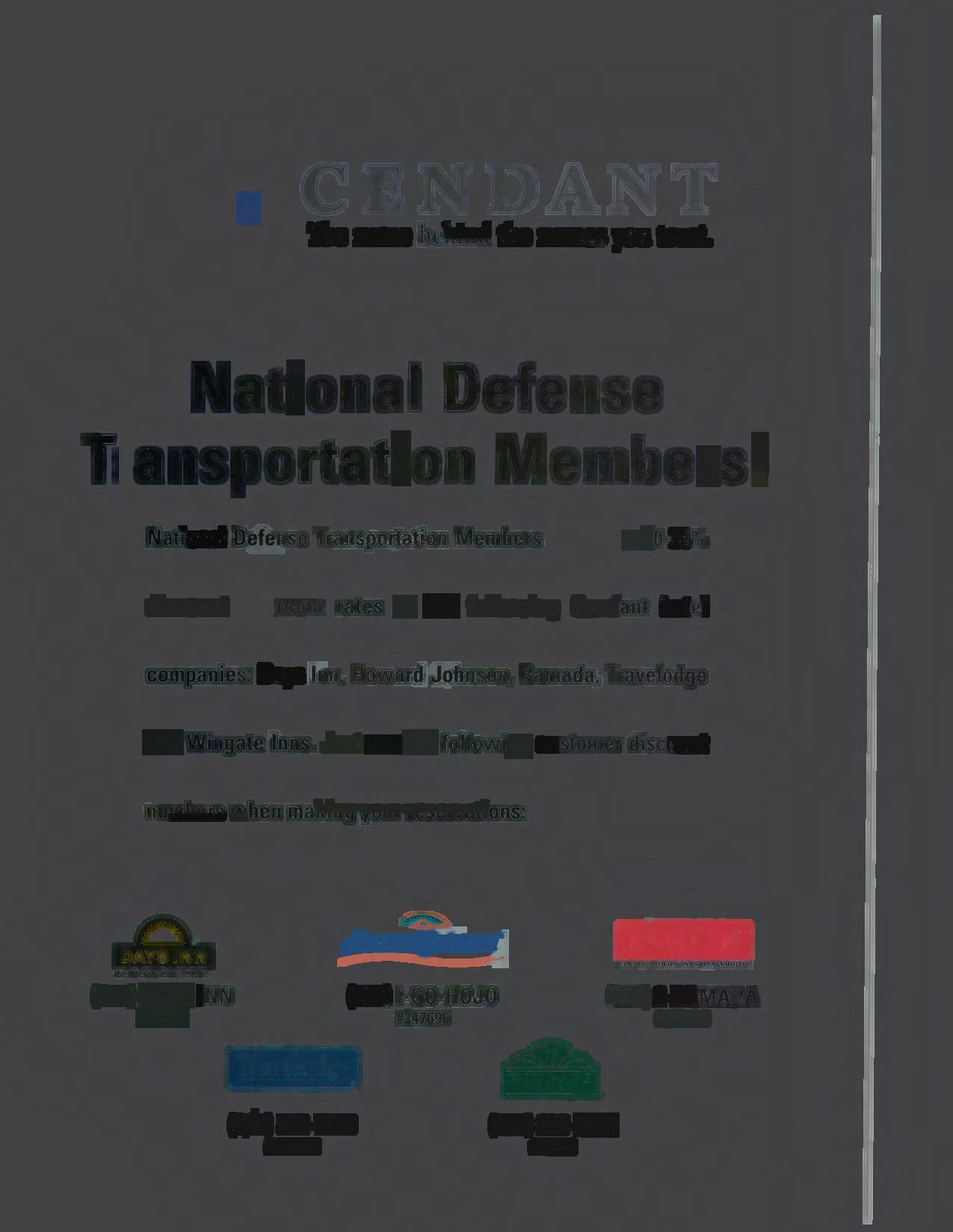


• A pilot program to re-engineer the movement of household goods has begun in several southeastern states.
• The Defense Travel System has developed an all-electronic travel process for Department of Defense employees. Travel system workers will begin worldwide training of system users in coming months.
Symposium headquarters for the MTMC Training Symposium will be at the Adam's Mark Hotel. For reservations, contact symposium contractor, Connections, at (404) 842-0000. Connections hours are Monday-Friday, 9:00 a.m.-5:00 p.m. Government rate for military and civilians traveling on official travel orders is $80 per night, plus tax. All taxes are reimbursed when claimed on your travel voucher. The non-governmental rate is $125 per night. Rooms will be filled on a first-come basis. All rooms must be guaranteed with a major credit card. Cancellations must be made at least 48 hours prior to the date of arrival to avoid being charged a no-show or cancellation fee of $125/$92, a one-night rate.
For additional symposium information, contact Winslow at (703) 6811181, or DSN 761-1181. DTJ
WASHINGTON, DC CHAPTER
The Washington, DC Chapter would like to congratulate several of its members who were honored at the 53rd Annual NDTA Forum in Houston Chapte r members receiving awards were: John Romps, National Junior Leadership Award; Jerry Good rich, USAF (Ret.), Marvin McFeaters, and Betty Y. Slanta, NDTA Distinguished Se rvice Award; Ron Conardy, National Membership Recruitment Award ; and Veronica Jones, recognized for bringing many new members into the chapter. Also at the Forum, DC Chapter members Robert N ev e l, Jeffrey McMahon, and Kevin Tokarski arranged for attendees to visit the Maritime Administration (MARAD) Ready Reserve Force (RRF) ships berthed in Houston, TX. Nevel, McMahon, and Tokarski are all employees of MARAD In other news, several members of the Chapter, along with their spouses, braved harsh wintry weather this past holiday season to come out and help fill bags of provisions for the less fortunate. The volunteers filled 250 bags at the Arlington Food Assistance Center. The Washington, DC Chapter and the U.S. Department of Transportation's Office of Emergency Transportation (OET) signed a Memorandum of Understanding recently, and in doing so formed the Washington DC Emergency Transportation Working Group (ETWG). The agreement came after a tour of the OET facilities by A-35 committee members interested in establishing a partnering agreement with OET. The Washington, DC Chapter recently reached a milestone by r eceiving the NDTA's coveted Class III Membership Award (chapters over 200 members). The Chapter, now over 1,200 strong, hopes to reach 1,300 members by June 1999.
The Wa shingto n, DC Chapter A nnual A -35 Scholarship Fundraiser raised over $8800 recently. Contributing to the total success were over 80 participants, A -3 5 volunteers , and many co ntributors This ye ar 's th eme was "Moving Hearts-Moving Minds. "
4th, 5th, and 6th grade students of Parkview Elementary School. "We received essays on every subject from submarines to bicycles," said Chapter President Chuck Codner. Prizes of gift certificates to "Toys-R-Us" were passed out to first, second, and third place winners. Each of the students who entered received a certificate One winner,
"Th e Importance of Futu re Submarines an d Starships. "
5th grader Tyler Barnett, combined submarines and starships for his winning essay. State Vice President Carl Sullivan and Chuck Codner alternated presenting the awards at the end of the year assemblies, which fell during National Transportation Week.
PUGET SOUND CHAPTER
Recently, the Puget Sound Chapter announced the awarding of the 1998-99 Richard (Dick) F. Dwyer Memorial Scholarship to Joshua Harman, a student at the University of Washington. Joshua is currently employed by, and is taking classes through, the University's Global Trade, Transportation, and Logistics Studies (GTTL) program He is also a graduate student in the China Studies program within the Jackson School of International Studies. This scholarship is presented each year in memory of Richard (Dick) Dwyer, who passed away in 1991. He sp ent 33 years in the transportation industry and was an active member of the NDTA. Mr. Dwyer served as president of the Seattle Chapter, and was involved on several committees. Students seeking to apply for the 1999-2000 Dwyer Scholarship may contact Susan Owens, Chapter Treasurer, at 833d Transportation Battalion, 4735 East Marginal Way S , Seattle, WA 98134, for additional information.
SAN ANTONIO CHAPTER
As it was for most Chapters, the last quarter of 1998 was a busy time for the San Antonio Chapter. They held their annual golf tournament, which was sponsored by SatoTravel, Inc. and many local transportation firms. Thanks to members and sponsors, $2,112 was raised for the Chapter Scholarship Fund. Many members were able to attend the Forum in Houston. Steve Rohrbough of New England Financial, provided a financial planning seminar for Chapter members. At the annual Christmas party, the Chapter donated a total of $500 to the American Red Cross and the Salvation Army to aid victims of the recent floods and help the needy during the holiday season.
SAN FRANCISCO BAY AREA CHAPTER
OKLAHOMA CHAPTER
With a theme of "What Transportation Means to Me," the Oklahoma City Chapter celebrated National Transportation Week with an essay contest. Participating were over 120
The San Francisco Bay Area Chapter held its Emergency Preparedness meeting in Oakland recently. Twenty-five members attended to hear speakers Chris Johnson and Nancy Miramontez, representatives from Pacific Gas & Electric Company. Johnson and Miramontez spoke about PG&E's emergency plans for dealing with disasters such as the 1989 earthquake, the firestorms of 1991, and heavy rains and flooding that plagued California recently. The Chapter Christmas function was held at the Walnut Creek



NDTA Distinguished Service Award Winn ers : (1-r) MG Tom Glisson, Mr. Marvin McFeaters, awardees, and Washington DC Chapter Presiden t Ted Cimral Awardee Mrs. Betty Y. Slanta with COL Bennie E. Williams presenting.
Fifth grader Tyl er Barnett receives th e first place award for his essay,

Marriott. The Charity Holiday Celebration event drew more than 41 attendees, all bearing canned goods to donate to the St. Paul Parish in San Pablo, CA. In addition to a raffle, a silent auction was held to help raise money for the charity and scholarship funds. In other chapter news, the annual golf outing held at Travis AFB's Cyress Lake raised more than $2100, setting a per capita record at over $100 per player.
JACKSONVILLE CHAPTER
The Jacksonville Chapter raised $465 in donations for military families in need this past holiday season. A check was presented to Naval Air Station Jacksonville Program Specialist, Family Services, Diane Parker. Donations were made by individuals and corporations in the Jacksonville area, including Landstar System, Inc , CSX Transportation, Inc., and Trailer Bridge, Inc. In addition, the Jacksonville Chapter's Emergency Preparedness Committee has been working with the Salvation Army and other agencies to provide assistance in times of emergency or natural disasters.
BWI CHAPTER
The BWI Chapter held its annual Christmas Gathering at the Ft. Meade Officers Club. Mike McVeigh, Chapter
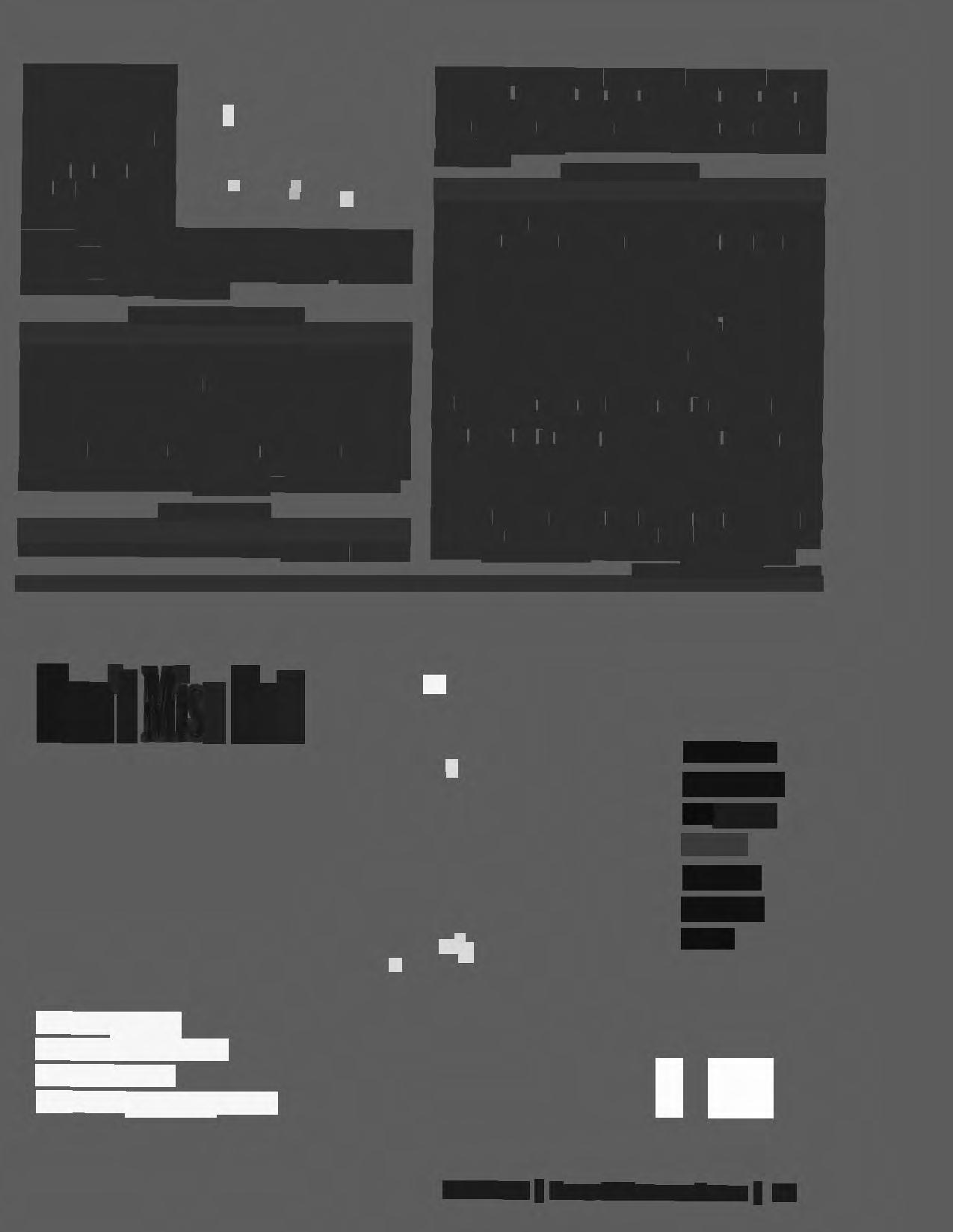
Treasurer and State VP, along with Bob Reilly, Chapter President, focused on the upcoming year and the Chapter's goals, including membership growth and strategies, program objectives, guest speakers and topics for 1999, and Chapter communication to Board and Members via e-mail.
ATLANTA CHAPTER
The Atlanta Chapters first meeting of the new year saw its largest attendance in several months. Mr. William H. (Bill) Minter, Program Manager, Commute Connections Division, Atlanta Regional Commission, was the guest speaker. He outlined the transportation opportunities that brought Atlanta to economic prominence, and examined how future transportation challenges will shape the Metro area's future . The Atlanta Chapter will be represented at the International Intermodal Expo 1999, thanks to Mr. John M. Youngblood, CEO of the IIE, and his donation of a booth for the Chapter. LTG (Ret ) Edward Honor has been invited to chair a panel on multi-modal transportation at a meeting during the Expo. Marv Johnson, Director of Intermodal Sales for TRISM and a member of the Atlanta Board of Directors, has arranged for the meeting to take place in a room overlooking the exhibit floor. Following the meeting, attendees will have access to the floor itself. The intermodal theme will be narrowed to Rail for the 2 n d Annual Atlanta National Transportation Day Forum, where a panel of senior railroad executives and military general officers will discuss the challenges of using rail during mobilizations. LTG Roger Thompson, DCinC USTRANSCOM, is the invited keynote speaker. Chapter News continued on page 29
Don't Miss Out
Gove rnment
AMC
Consistent quality improvements led to the C-17 Globemaster III production unit earning the Commerce Department's 1998 Malcolm Baldrige National Quality Award. The award, presented by President Clinton, was accepted by Dr. David Spong, Vice President and General Manager of Boeing Airlift and Tanker Programs, a division headquartered in Long Beach, CA. Boeing won the prestigious award following an independent review and site visit, conducted by the Commerce Department's National Institute of Standards and Technology. Cited in the institute's review of the program was a 54 percent reduction in C-17 rework and repair since 1992, an eightfold increase in corrective maintenance mean-time since 1993, and 100 percent on-time delivery of new aircraft since 1995. "Exceptional" ratings in Air Mobility Command C-17 Contractor Performance Assessment Reports have also increased significantly since 1995. "The process improvements made by Boeing continue to give us great confidence in the C-17 program," said BG Nick Williams, Director of Plans for Air Mobility Command. "As we refine the new Expeditionary Force concept, it is even mor e imperative that we minimize the amount of maintenance required and the time our aircraft remain on the ground for maintenance."
MSC
En route to Singapore, through the Straits of Malacca, Military Sealift Command fleet oiler USNS Yukon made a brief detour in December to rescue nine fishermen trapped on board the disabled Indonesianflag fishing vessel Sari Malati. Upon reaching the stranded 30-foot vessel, and subsequently bridging an apparent language barrier, Yukon's medical service officer determined Sari Malati's crew to be in good health, despite having been adrift at sea for five days. Before taking the wooden fishing vessel under tow, the 81 civilian mariners and 23 uniformed U.S. Navy personnel on board Yukon provided much needed and appreciated food and water to the Sari's crew. "Yukon really came through. They were in the right place at the right time and did a great job," said VADMJim Perkins, U S. Navy, Commander, Military Sealift Command. When within responsible range of the Indonesian shore, Yukon dropped tow and dispatched her launch to guide Sari Malati the remaining distance to the beach at Pulau Medang.
MTMC
Two railroad switch engines that symbolized Bayonne as a working military ocean terminal are no more. The 80-ton engineswith their familiar numbers of #1650 and #1679-have been shipped as surplus property Their new home is the U S. Air Force's Clear Air Station, AK. "The move is indicative of the rapid approach of full closure here," said COL Dave Beck, Commander,
Bayonne Army Terminal. The engines , built in 1952, are in perfect condition, said Beck. Installation records indicate the engines were rebuilt in 1988 and shipped to Bayonne in 1989. A railroad inspector from Alaska who looked at the switch engines was impressed. "These are the sweetest, nicest engines I've ever se e n," he told Bob Southward, Move Coordinator. In April 1997, when the 600th Transportation Terminal's mission transferred to Fort Monmouth, N.J., the engines became surplus. Employees of the DoD Rail Shop, Hill Air Force Base, UT, prepared the engines for loading. The team shipped in their own special railroad flat cars with built-on tracks and ramps. The ramps were unbolted and a 1-ton crane was used to mount them at the ends of each flat car. The engines were then inched up the ramps and onto 1 the raii cars. One of ' the biggest challenges of the move was securing the switch engines to the flat cars, said Bruce Zukowski, Heavy Mobile Equipment Inspector. "Because we have older locomotives, they were not equipped with shackle hook holes to properly secure them," said Zukowski. Mechanics drilled 24 holes through two-inch steel plates to allow for chain shackle hooks. Exhaust stacks had to be cut off the tops of the locomotives to reduce shipping height for the trip to Alaska. A CONRAIL engine hauled the flatcars away-beginning their trip to Alaska. "It took a lot of phone calls, e-mail, and effort from a lot of people to get this job done," said Southward "However, it's nice to see these classic locomotives being put to work again and not being sent to the scrap yard A piece of Military Ocean Terminal Bayonne is now in Alaska."
MTMC



The Military Traffic Management Command will be honoring outstanding industry support. A quality awards program will honor firms who have supported the Army transportation agency in 1998, said Jeanie Bell-Winslow, awards coordinator "Our awards are given annually to the transportation industry in recognition of their commitment to excellence," said Winslow. The competition is open to all DoD-approved transportation providers in all modes and services. To be eligible , a firm must have demonstrated sustained exceptional performance in support of the DoD during 1998. This year's awards will be presented at a special dinner during the MTMC Training Symposium, March 29-April 1, 1999, in Denver, CO.
MTMC
The USNS Dahl, the third in a new series of U.S. Navy Strategic Sealift Ships, was launched recently at San Diego, CA by the National Steel and Shipbuilding Company The firm has contracts to build four more



iden ti cal vessels. The ships are designed to deliver rollon/roll-off and lift-on/lift-off military cargo anywhere in the world. The USNS Dahl is 950 feet long, 105 feet wide and has a total cargo area of 393,000 square feet. The ship was named after Spec. 4 Larry Dahl, who was killed in Vietnam saving fellow soldiers from a grenade blast.
Chap ter N e vv s
Continued from page 27
STUTTGART CHAPTER
The Stuttgart Chapter organized a family event to the Hellground Valley Mill in Odenwald Forest for a Christmas Tree Cutting-a very German type of event. After children selected their trees in the forest, hot beverages and sausages were served, despite rainy and snowy weather. Upon return to the Mill, participants admired the U.S. flag, set for the U.S. servicemen in the Hellground Valley. The authentic watermill was shown by the owner in operation, as were his own bakery, cheesery, and butchery. A fine wild boar roast dinner added to the rural atmosphere. This was a fine addition to the regular educational trips taken by the Stuttgart Chapter, like those to the German Rail Junction Systems, the heavy goods loading company in Stuttgart Harbor, the Scholpp Company, and others.
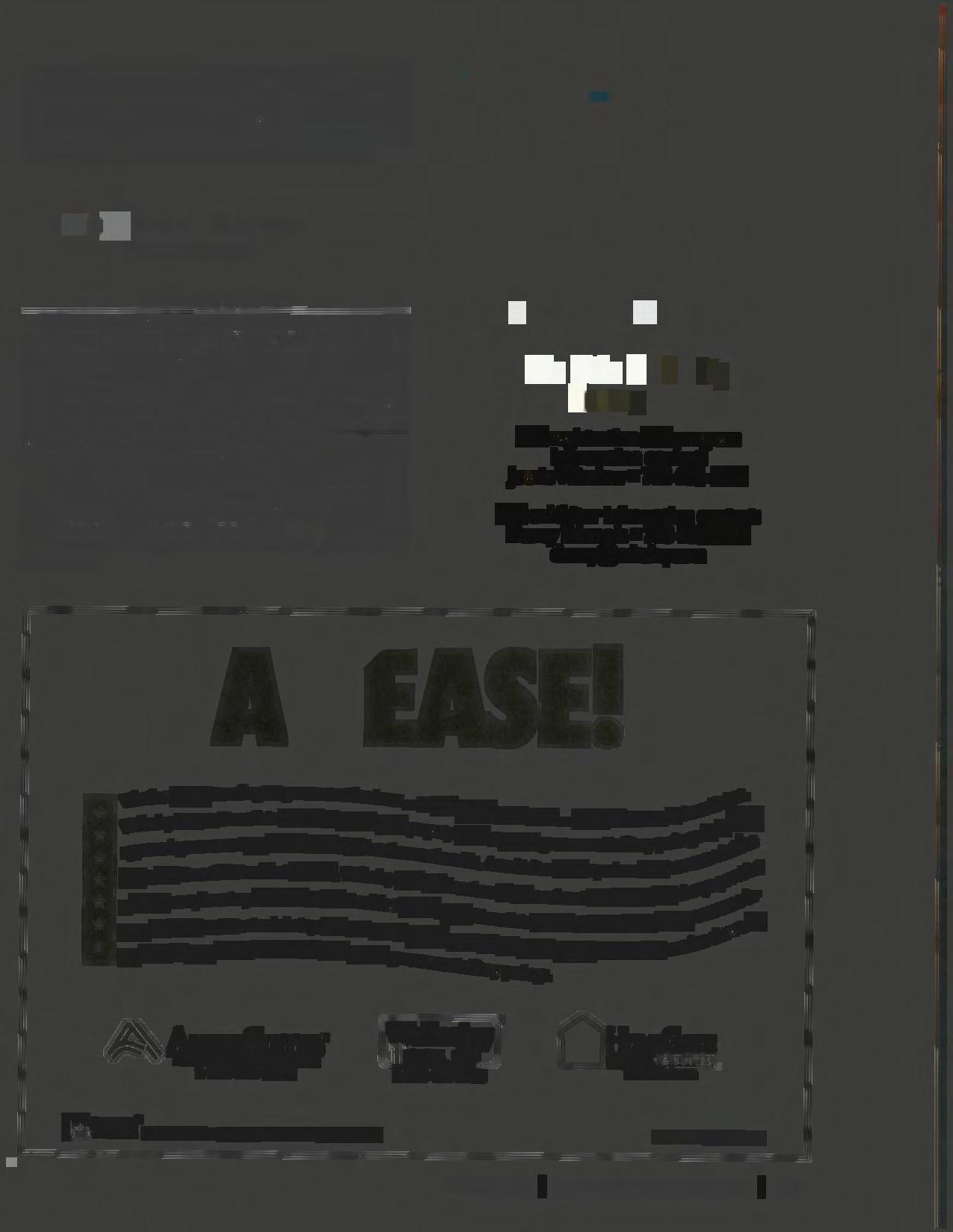
-5011 denny@ndtahq.com
ATE
,.1hether you ' re traveling on government business . ,c..,,j.\te$, v, ••• or JUst taki e~"" we1lesley Inns or HomeGate Studios & Suites. Each ng some R&R ... you'll be at ease at [\-rn' ot \le\o~ P operty offers ie 7>-t P roved government per diems. With 100 Jocati a special government/military pac¼a -A'3.'i>-of..$ ap ons nationw d .-<X\OV- 1 e, Amens • "" • · cco1,.,. - s d free Bountiful Breakfast Buffet™ Wellesl uites ouers spacious suite a o'"\ie an a ey Inns has locati . '<>-1$ ~' deluxe complimentary breakfast at The Breakfast Tub ons m the northeast and Florida and a\\N ~orll> a t 5 for those on an extended-stay, and one rat ' eGate Studios & Suites offers rootu1 1-1-l~ \O t1on e is always good fl :oet s'r.-0 h e hotel of your choice and ask for their special or the whole family Call the 800 nul.1\t government1m·1 ·
• SatoTravel President and CEO
Sa t-r{T\1,:n ~el Michael J. Premo presented a .UJ 11 UV~ check for $1,500 to NDTA Chairman Jeff Crowe and President LTG (Retired) Edward Honor at the NDTA National Board meeting held at SatoTravel headquarters. The monies were proceeds from a raffle-a SatoTravel tradition-at the NDTA Forum in Houston to benefit the NDTA Scholarship Fund. The prize was a Hawaiian vacation for two, including round-trip air transportation and accommodations at the Waikiki Joy Hotel, donated by Aston Hotels and Resorts.
John Hulecki has been promoted to the position of Director, Quality Systems Management, responsible for implementation and maintenorthArnerican. nance of North American Logistics' ISO 9001 and ISO 9001 Certification processes. Hulecki joined North American in 1981, after earning a B.S. degree in transportation from Indiana University. In his new position, he reports to Mike Gunkel, Vice President of North American Logistics.
Providing Mission Critical Solutions
Customers can now check the status of
Crowley American Transport cargo shipments via the Internet. It's fast, easy and convenient. Go to the Crowley web site at www crowley.com, and click on trace your shipment. Then, key in a bill of lading, booking, equipment, dock receipt, vehicle identification, or shipper reference number, and you'll receive detailed information about the status of your shipment. It's that easy. Shipping more than one unit? This new application will let you trace up to nine containers, trailers, and/or vehicles with each submission
~NORTHWEST
WorldPerks members can now earn more WorldPerks miles, at more restaurants across the United States, when they enroll in Northwest's discreet new WorldPerks Dining for Miles program. Partnership with The Signature Group allows members to earn 10 WorldPerks Miles for every dollar spent, including tax and gratuity, at more than 5,000 restaurants in the United States.
• U·S Al R WAYS US Airways is making travel to Europe more attractive by offering new low fares in nearly 1,000 markets. Round-trip fares to popular destinations such as Amsterdam, Frankfurt, London, Madrid, Munich, and Paris are as low as $298 for travel now through April 1999. The greatest discounts are available when traveling Monday through Thursday, and a 30-day maximum stay applies to these fares.
1 Inman
Floyd
NTERSTATE
has come on - wo•Low,., ""oc•r,o•- board as the driver recruiter for Interstate Van Lines. Floyd will be responsible for driver training as well as recruitment and retention . Floyd has 13 years experience as an owner-operator and was associated with Interstate in that capacity, from 1989-1997. He brings a unique perspective to the position as he is one of the few driver recruiters in the industry who is a seasoned driver. Interstate has been a recognized leader in transportation services since 1943. For the past three years, Interstate has been awarded the Government Services Administration's highest customer satisfaction index of all major carriers. The company is also a two-time recipient of the US Department of Defense's MTMC Quality Award for Customer satisfaction.


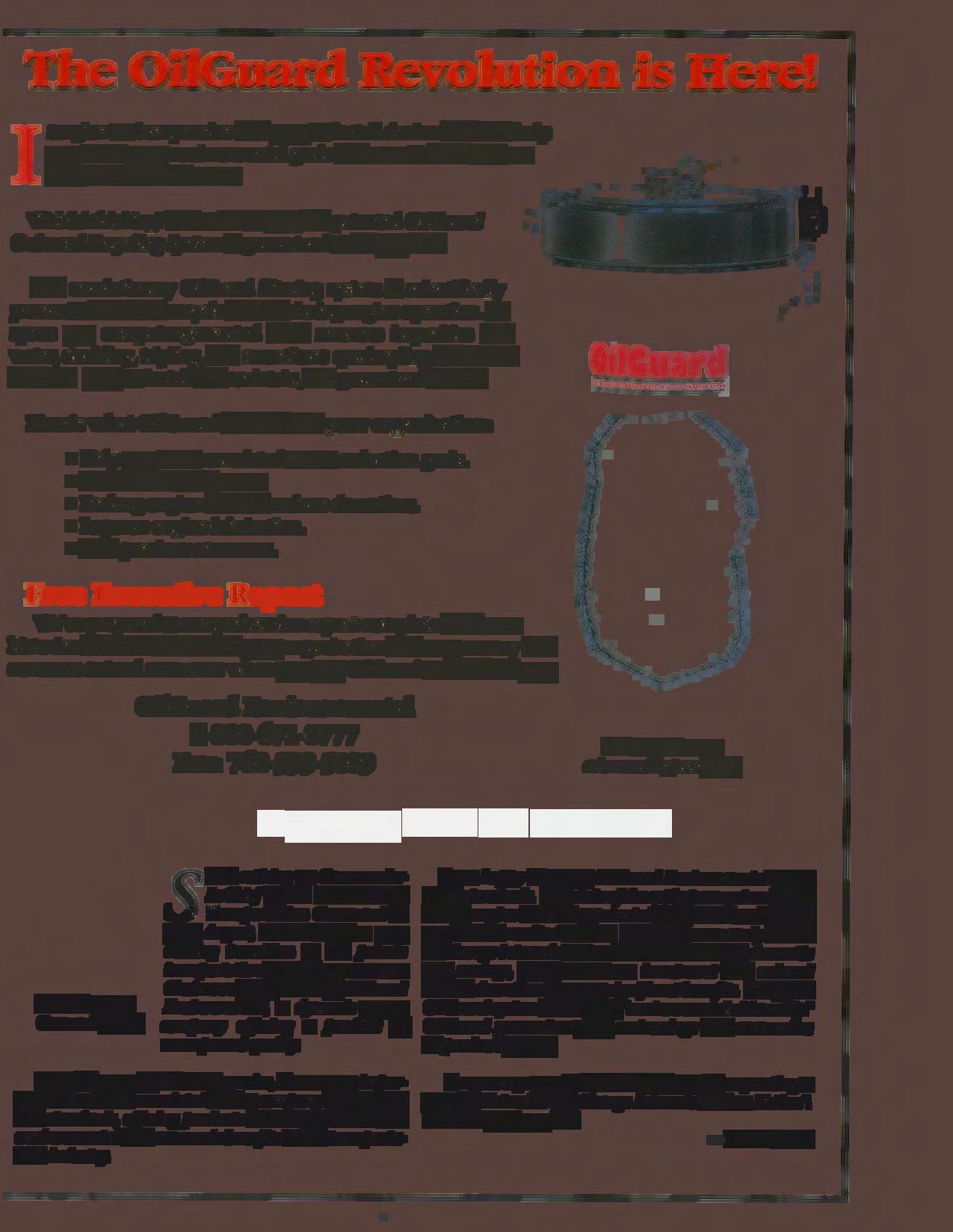
The OllGuard Revolution is Here!
Imagine an inexpensive and easy to install device that will help you meet your environmental goals and save at least 50% on lube oil and labor costs.
Wishful thinking? Not at all. In fact, the patented OilGuard Onboard Recycling System is guaranteed to do just that.
The revolutionary OilGuard filtering system is scientifically proven to dean and recycle lube oil during engine operation. Its space age computer-generated filter removes impurities and water, doubling, tripling, and sometimes quadrupling the life of lube oil! Easy to install and maintain, it is guaranteed for life.
Here's what OilGuard will do for your organization:
• Help you meet mandated waste reduction goals.
• Cut oil and labor costs.
• Prolong engine life and reduce downtime.
• Improve engine lubrication.
• Save precious resources.
Free Executive Report
We've prepared a comprehensive report complete with case histories that will show how your organization will save money and conserve natural resources when you put OilGuard to work for you.
After 34 years ofAir Force service, it was very important to me that I associated with a company of high ethical standards, offering products and services with real environmental and economic benefits to the transportation industry. The world's most advanced bypass filter
Sretiring as CommanderIn-Chief of the United States Transportation Command in early August, I have made a very exciting transition to the private transportation sector. I now serve as Chairman of the Board of OilGuard Environmental, a dynamic young company offering a product of unsurpassed quality.
I am happy to report OilGuard Environmental meets those standards. Our state-ofthe-art bypass system hypercleans engine oil with a patented filter based on technology used in medical science. Our users commonl,y extend oil change intervals two or three times and the dramatic cost savings, rapid return on investment and reduced vehicle downtime are very significant benefits. Use of the OilGuard system shows good "environmental citizenship." OilGuard guarantees your cost-savings and warranties its products for life.
I encourage you to take the first step by requesting a copy of"Extended Oil Change Intervals Fact vs Fiction" You'll be glad you did.
- Walter Kross

Norm Dresden, Long Time NDTA'er
Norman L. Dresden, a retired trucking company executive who lived in White Marsh, MD, died recently from complications of diabetes at Sinai Hospital. He was 72.
Mr. Dresden retired in August from ABF Freight Lines in Baltimore, MD, where he had been Director of Government Sales for more than 22 years. Earlier, Mr. Dresden, who began his trucking career in Chicago, worked for the Transcon and Pacific Intermountain Express trucking companies in sales. Born and raised in Chicago, where he graduated from high school, he served in the Navy during World War II in the Pacific. He was active in the Veterans of Foreign Wars and American Legion, as well as the Baltimore Chapter of the NDTA.
True colors.
With over 18 years of Department of Defense experience, Mercer moves over 10,000 DOD shipments a year. We serve all of North America, and show our true colors through dedication and service, offering:
• Flat, van, drop-deck and specialized trailers
• Over 80 offices serving North America 24 hours a day, 7 days a week including Emergency Response
• Mobile Communications in all units
• TPS and EDI services
• Computerized load planning and GTN ITV tracking
From loading to delivery, every shipment is tracked and handled with care and efficiency
To put our award-winning service to work for you, call Mercer today. We'll come through with flying colors.
54 th A NNUA L FOR UM A ND EXPOSJ TJON
Anchora5e, Al _ aska - 2 to 6 October 1999
Hilton Anchorage Hotel
Sgl/Dbl-$115 (convention rate)
500 West 3rd Avenue
PO Box 100520
Anchorage, AK 99510-9953
www.hilton.com
Telephone: 1-800-Hiltons
Fax : (907) 265- 7140
Toll Free:
Germany - 0130-818146
Netherlands - 06022-3346
United Kingdom - 0990 466677
Hotel Captain Cook
Sgl/Dbl-$120 (convention rate)
4th @ K Street
Anchorage, AK 99501
www captaincook.com
Telephone: (907) 276-5000
Fax: (907) 278-5366
Westmark Hotel
Sgl/Dbl-$99 (convention rate)
720 W. 5th Street
Anchorage, AK 99501-2198
www.westmarkhotels.com
Telephone: (907) 276-7676
Fax: (907) 258-4958

rate
Rates are per night , per room and do not include state and local occupancy taxes of 17%. Due to the limited number of room types , requests are honored on a first-come, first-served basis.
Arrival Date __/_/_/ Time: Departure Date:__/_/_/ Time: ________
Accommodations: Number of guests One Two Three Four Special Considerations: Smoking Non-Smoking Handicapped-accessible Other: ______ Type of Bed: King Queen Double Double Double Name(s) : ________________________________ Address: ________________________________ City/State/Zip:. ___ Daytime Phone Number with Area Code: _____
E-mail Address: _________
Advance deposit: Please guarantee your reservation with one night's deposit by: major credit card, or enclosed check. Deposits are refundable if cancelled within 7 days of arrival.
Credit Card Holder's Name: ____________________________ Type of Card: ________________________________
Card#:
Expiration Date: ______ Sharing room with: _________________ N/A _ _ Special Request: _______________________________
Forum Airline Reservations
• 10% off of lowest applicable published fare (minimum discount).
• Ticket through No rthwest/KLM Direc t or use your own travel agent.
• Please contact Northwest Airlines World Meeting and Incentive Reservations at l-800-328-111 l between the hours of 7:30 a.m.-7:30 p.m. (CT) Monday-Friday to make your reservations. Have your NWWORLDFILE code available.
• WorldPerks mileage credit will be awarded for travel via this certificate.
Forum Car Rental Reservations
• Dollar Rent A Car'" has been designated as the official car rental company for the 1999 Forum.
• When you rent from Dollar and use the NDTA CD# ND0OO 1, a portion of your rental fee goes to the NDTA Scholarship Fund.
• Dollar offers 10% off our already low rates. Rates include unlimited mileage (geographic restrictions may apply), additional driver fees, and are available at the Anchorage International Airport from Saturday, September 25 to Monday, October 11, 1999.
• Local taxes , CDW/LOW, UMP, SLI , PAI, PEP, other optional items , refueling , airport access fees or other applicable fees are not includ ed Some additional charges and age restrictions may apply. Free LOW is available for renters on official travel status.
• Call your professional travel agent or Dollar at l-800-800-4000, or reserve through the Internet at www.dollar.com.
• Mention NDTA CD# ND0OOl when making your Forum reservation, and see why Dollar Makes Se nse® ·


APL Limited
Bristol Associates
CSX Transportation
Emery Worldwide a CNF Company
Evergreen International Airlines, Inc.
International Longshoremen's Association AFL-CIO
Landstar System, Inc.
Lockheed Martin Mission Systems
National Air Cargo, Inc.
Sea-Land Service, Inc.
TRISM, Inc.
TRW Systems and Information Technology Group
United Technologies Corp.
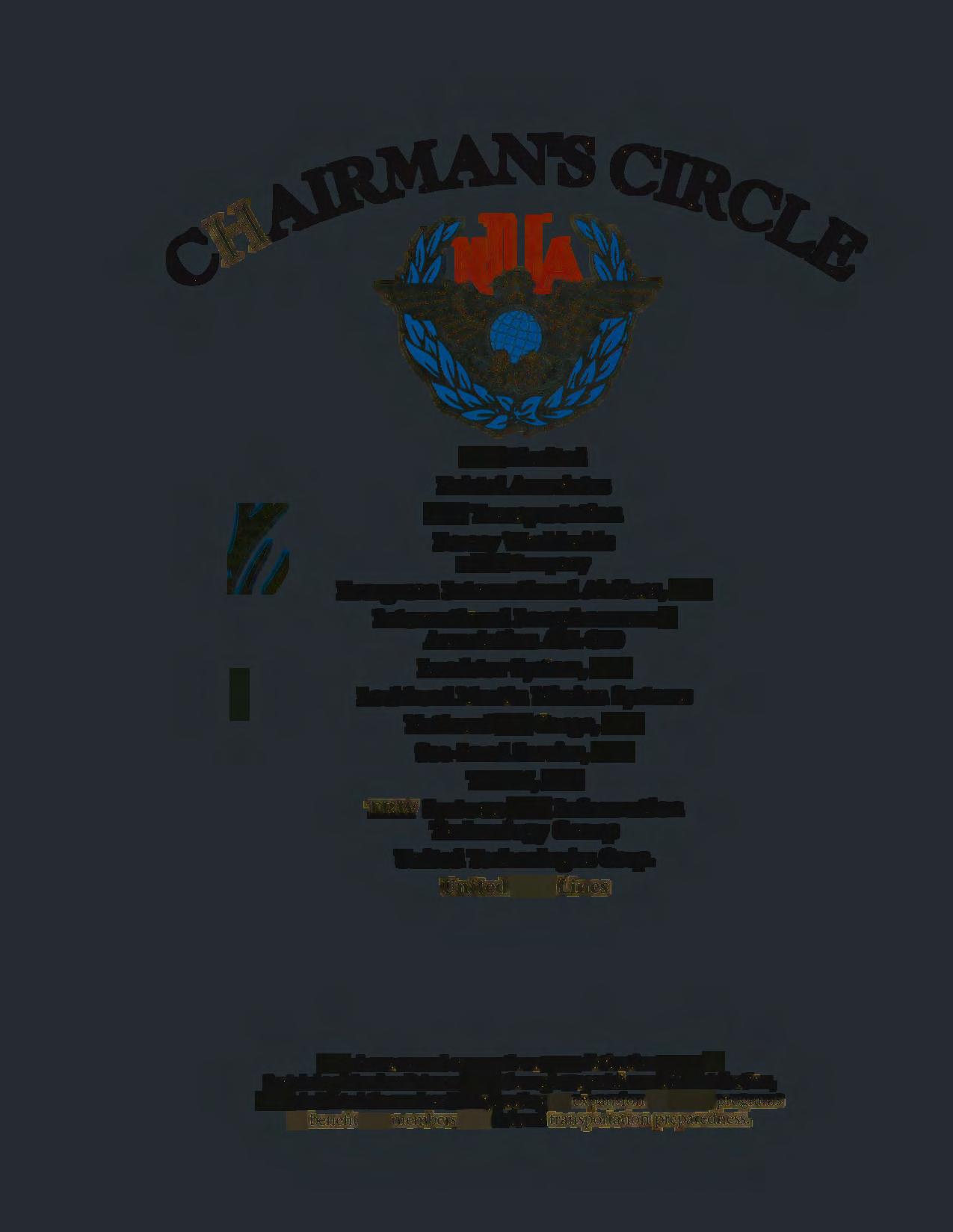
The above-named corporations are a distinctive group of Sustaining Member Patrons who , through a speci al annual contribution, have dedicated themselves to supporting an expansion of NDTA programs to benefit our members and de fense transportation preparedness.
For worldwide :servations, call your professional travel agent. or -800 -8 00 -4 0 00 www.dollar.com
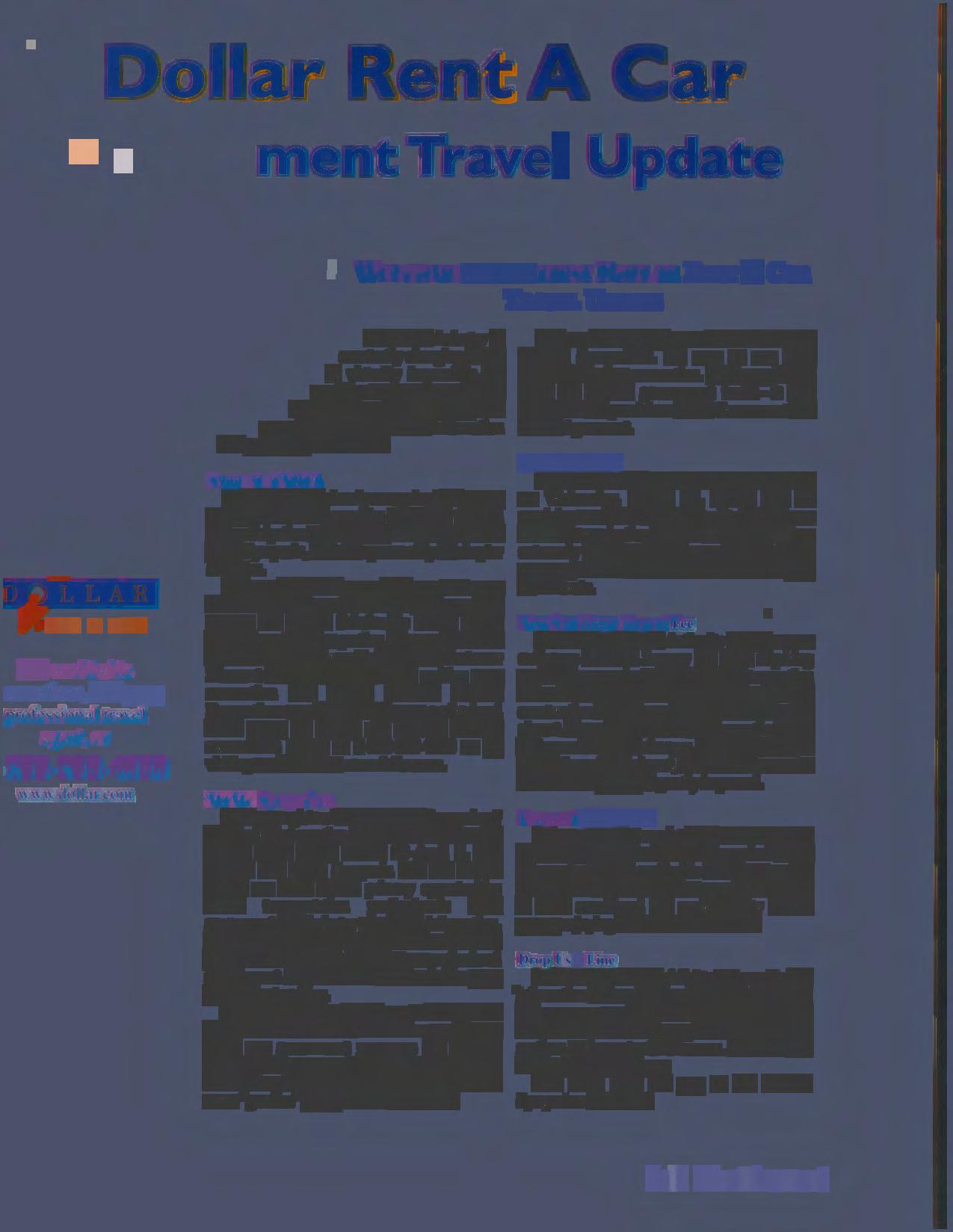
ment Travel Update
WELCOME TO THE FIRST DOLLAR RENT A CAR TRAVEL UPDATE
The travel industry is constantly changing and it is virtually impossible for any of us to stay current. Dollar would like to help by using this space to share travel related information that you might have missed.
Support of NDTA
We hope you've already recognized the strong support that Dollar provides to NDTA through our participation at the Forum, at the MTMC and Navy Symposia, and our sponsorship of chapter activities.
Did you know that every time you rent a car from Dollar and use the NDTA rate, you help support the NDTA Scholarship Fund? That's because we return a portion of your rental fee back to NDTA Just provide the NDTA Customer Discount Number ND0OOl when making your reservation and NDTA scholars benefit. Reservations can be made by your professional travel agent, by calling our 24-hour toll-free reservations center at 1-800-800-4000 or by visiting our website at www.dollar.com.
MTMC Symposium
Have you registered for the MTMC Symposium? This important meeting will be in Denver at the Adams Mark Hotel, March 29-April 1. The MTMC and Navy Symposia and the NDTA Forum are three of the primary opportunities where transportation professionals from government and industry can share information, learn from each other, and have face to face dialogue. The seminars are critical to our professional development. And the Trade Show area is a great place for networking.
We look forward to seeing you at Booth D for Dollar! We'll have all the information you'll want about our government programs for official, leisure, and contractor travel, plus we'll have a little fun as well. And of course there will be some "goodies" you'll want to take home.
Yes, we have special rates in Denver for the MTMC Symposium. Be sure to use CD# ND000l in your reservation. And, yes, this is valid for official government travel-it will include all the provisions of the Government Car Rental Agreement.
MTMCAwards
Please don ' t miss the MTMC Awards dinner on Wednesday, March 31. Dollar will be receiving one of the MTMC Quality Awards as a result of a nomination from the U.S. Navy. We are extremely proud to be the very first car rental company to ever receive this award! Come help us celebrate.
New San Diego Airport Fee
The San Diego Port Authority passed a new ordinance effective January 15, 1999 requiring car rental companies to collect a $3.50 transaction fee on all rentals. This fee will be used to fund the construction of their new terminal facilities at the airport. If you haven't been there recently, you'll be impressed by the changes, it is much easier to transit through the airport, and the road access to and from the airport is greatly improved.
Frequent Flyer Miles
Do you collect frequent flyer miles from the airlines, hotels , and car rental companies? Don't be surprised if the applicable excise tax on the value of the miles is added to your invoice. This is often considered the responsibility of the person enjoying the benefit of the miles.
Drop Us a Line
Dollar Rent A Car is delighted to provide this information and we hope you find it to be useful. We encourage you to send us items for future publication. Please forward your comments and suggestions to knpreston@dollar.com We look forward to hearing from you.
And we'll look for you at the MTMC Symposium in Denver!
H O n O r R O 11 of Sustaining Members
These firms support the purposes and objectives of NDTA.
AAR Cadillac Manufacturing
ABF Freight System, Inc.
Air Transport Assn. of America
Alamo Rent A Car
Alaska Cargo Transport, Inc.
American Airlines
American Auto Carriers
American Express Government Services
American International Airways, Inc.
AMO-American Maritime Officers
American Overseas Marine Corp.
American Road Line
American Shipbuilding Assn.
American Trans Air
Anchorage Hilton
APL Limited
ARINC, Inc.
Associated Air Freight, Inc.
Association of American Railroads
Atlas Van Lines International Automation Research Systems
Boss Hotels & Resorts
BAX Global
The Boeing Co.
T.F. Boyle Transportation, Inc.
Bristol Associates
Carlson Wogonlit Travel
Carnegie Group
Cendant Corp.
Center for Global Logistics & Transportation
USMMA-Continuing Education
Emery Worldwide
Enterprise Rent A Car
Evergreen International Airlines, Inc.
Farrell Lines, Inc.
FedEx
Flughofen Frankfurt/Main AG
FMC Corporation
GATX Terminal Corp.
GE Aircraft Engines
Government Sales Associates, Inc.
GRC International, Inc.
Greyhound Lines, Inc.
Information Technology Solutions
lntermec Technologies Corp.
International Longshoremen's Association, AFL-CIO
International Organization of Masters, Mates and Pilots
Kansas City Southern Railway
Labor Management Maritime Committee
Landstar System, Inc.
Lemco
Litton/PRC
Lockheed Mortin Aeronautical Systems
Lockheed Mortin Mission Systems
Logistics Management Institute
Lykes Lines Ltd., LLC
Central Delivery Service of Washington, DC Moersk Line Ltd.
Computer Sciences Corp.
COMSAT Mobile Communications
Consolidated Freightwoys Corp.
Consolidated Safety Services, Inc
Coopers & Lybrand
Crowley Maritime Corp.
CSX Transportation
Dallas & Mavis Specialized Carriers
Davenport Mommoet LLC
Delta Air Lines, Inc.
Deutsche Bohn AG (German Railroad)
DHLAirwoys
Diablo Transportation
District No. 1-PCD, MEBA
Dollar Rent A Car
Dynamics Research Corporation
EDS
Regional Patrons
Albuquerque C&VB
American Management Systems
American Moving & Storage
Association
American Ship Management, llC
Anteon Corporation
Apollo-Galileo International
Arven Freight Forwarding, Inc.
Avis Rent A Car
Bay Ship Management, Inc.
California Trucking Association
Cendant Mobility
Century Technologies, Inc.
MAR, Inc.
Maritime Overseas Corp.
Matson Navigation Co.
MQyflower Transit
Mercer Transportation Co.
National Air Cargo, Inc. ,
National Air Carrier Associanon
National Van Lines
NationsBonk
Northwest Airlines, Inc .
OAGWorldwide
Old Dominion Freight Line, Inc.
Omni Air International
Overnite Transportation Ca.
Pilot Air Freight
Pony Express Delivery Services
Choice Hotels International
Concurrent Technologies Corp.
CSI Airlift Services
Dodge Moving & Storage Co.
Gelco Government Network
Global Van Lines
Great American Lines
Greensboro C&VB
Green Valley Transportation Corp.
Hertz Corp.
Hyatt Hotels and Resorts
lnnovata
Innovative Logistics Techniques, Inc.
Interstate Van Lines
Kalyn/Siebert, Inc.
Port Authority of N.Y. & NJ.
Port of Beaumont
Port of Oakland
Prime Hospitality Corp.
QUALCOMM
Roadway Express, Inc.
Roberts Express, Inc.
The SABRE Group
Sandia National Laboratories
SataTravel
Schneider Notional, Inc.
Science Applications International Corporation
Sea Containers America, Inc.
Sea-Land Service, Inc.
Sealed Air Corp.
Seafarers International Union of N.A.AGLIWD
Southwest Airlines
SRA International Corp.
Stanley Associates, Inc.
Stevedoring Services of America
Stewart & Stevenson
Totem Ocean Trailer Express, Inc.
Transportation Institute
TransSystems
Trans World Airlines
TRISM Inc.
TRISM Specialized Carriers
Tri-State Expedited Service, Inc.
Tri-State Motor Transit Co.
TRW Systems and Information Technology Group
TTX Company
Union Pacific Railroad
UNISYS Federal Systems Division
United Airlines
United Parcel Service
United Technologies Corp.
United Von Lines, Inc.
US Airways
Visa USA, Inc.
Waterman Steamship Corp. (Central Gulf Lines)
Lance Livingston Productions R & RTrucking, Inc.
Logistics Management Resource, Inc.
MCR Federal
MEVATEC Corporation
Military Living Publications
Modern Technologies Corp.
Morten Beyer & Agnew
Munitions Carriers Conference
National lnterrent
NCI Information Systems, Inc .
North American CLS, Inc.
Oakwood Corporate Housing
Omega World Travel
Port of Corpus Christi Authority
Quality Support Inc.
Radian, Inc.
Ruthern Transport Services
Savi Technology
Sea Box, Inc.
Spokane Area C&VB









System Technology Associates, inc. TechMate
Thrifty Car Rental
Trailer Bridge, Inc.
Trailway Transportation System
Trans Meridian Airlines
The Virginian Suites
U.S. Bank


est. tosenre est.
The world leader in commercial aircraft cargo loaders proudly puts its dependability at the disposal of DoD.
To major airlines and air freight companies around the world, FMC Airline Equipment means absolute dependability in cargo loaders.
Our reputation for being up to any challenge has made us the global leader in our field.
And we're eager for our country's defense industry to have that same technological edge. Nowhere is there a more critical need for total dependability under any circumstances.
That's why we're proud to be working on a proposal for the U.S. Air Force's Next Generation Small Loader program.
We're more than ready ... more than able. And being committed to excellence in what we do has never been more personally rewarding to each of us.
Bookshelf Ideas
Development and Implementation of Reverse Logistics Programs by James R. Stock, published by Council of Logistics Management, 2805 Butterfield Road #200, Oak Brook, IL 60523, 1998. Cost non-member $70, Member $35.
This book is a report of research into the problems of planning, controlling, and implementing the returning of a firm's products. It was designed to study the reverse logistics process and its components.
The research objectives were: Describe the reverse logistics process and its components, identify key components of the process and their implications, present some specific and general reverse logistics activities, identify and discuss reverse logistics program components and program implementation and discuss the relationships of reverse logistics decisionmaking.
The text is organized into four chapters plus appendices. Chapter I-Introduction, Chapter 2-Concepts, Chapter 3Findings, Chapter 4-Conclusions. The researcher presents 14 findings for consideration of logistics managers and students of logistics. He offers the following critical factors to provide for successful reverse logistics programs: Management and Control, Measurement, and Finance.
The researcher offers lessons learned as best practices in reverse logistics. Utilizing company case studies, he presents ten "how-to ... " logistics activities in the paper and Appendix A for study and application and applicable to the managers own operations. Some general approaches and several more specific detail programs are provided. The author believes that the study provides sufficient information to allow readers to develop reverse logistics programs for their firms. Included in the text is a valuable bibliography for use by future researchers, students and logistics managers. Appendix B provides a summary of environmental certification, directives, regulations, and Policies. Appendix C provides internet sources of information on reverse logistics. The book is recommended for logistics managers faced with substantial reverse logistics.
CLM's Annual Conference Proceedings, Annual Meeting 1998 published by the Council of Logistics Management, 2805 Butterfield Road #200, Oak Brook, IL 60523, 1998. Cost $35.
This is a collection of 55 papers presented during the 1998 Council on Logistics Management's Annual Conference on "Logistics Excellence: Vision, Processes, and People." This year's 672-page edition of the Proceedings contains "The 1998 Ohio State University Survey of Career Patterns in Logistics," by Bernard J. La Lande and James H. Masters. This annual study contains current data about the "typical" chief logistics executive 's age, education, salary, mobility, responsibility, staff size, budget, and positioning within the firm's operations. Another unusual feature is Herbert W. Davis' yearly compilation of industry statistics entitled "Logistics Costs and Service: 1998."
Topics follow the track topics of the annual conference. The following track topics are included: Activity Based Costing, Change Management: The People Factor, Consumer Direct Logistics, Current Logistics Issues, Current Research and Surveys, Customer Service, Customized Logistics Solutions, Debate!, Delivering Quality, Electronic Commerce, Emerging Technologies in Supply Chain Management, Ethics and Protocols, European Logistics Strategies, Integrating
Logistics with Other Corporate Functions, Inventory Strategies, Law Safety and Public Policy, Leadership in Logistics, Logistics Value and the Bottom Line, Managing Across Borders and Cultures, Managing Carrier/Shipper Interface, Replacement Parts Support, Reverse Logistics, and Warehousing. The book offers a wide variety of articles on almost all aspects of the firm's logistics function and is a valuable asset for the logistics manager's bookshelf
GAO Transportation Reports prepared by the U.S. General Accounting Office. The GAO publishes reports which are of specific interest to readers. We have listed several examples of some recent issues on transportation subjects:
GAO/AIMD-99-17 Excise Taxes-Internal Control Weaknesses Affect Accuracy of Distributions to the Trust Funds November 1998
GAO/GGD-99-16 Managing For Results-Measuring Program Results That Are Under Limited Federal Control December 1998
GAO/RCED-99-25 Air Traffic Control-Status of FAA's Modernization Program December 1998
NDTA Planning Calendar









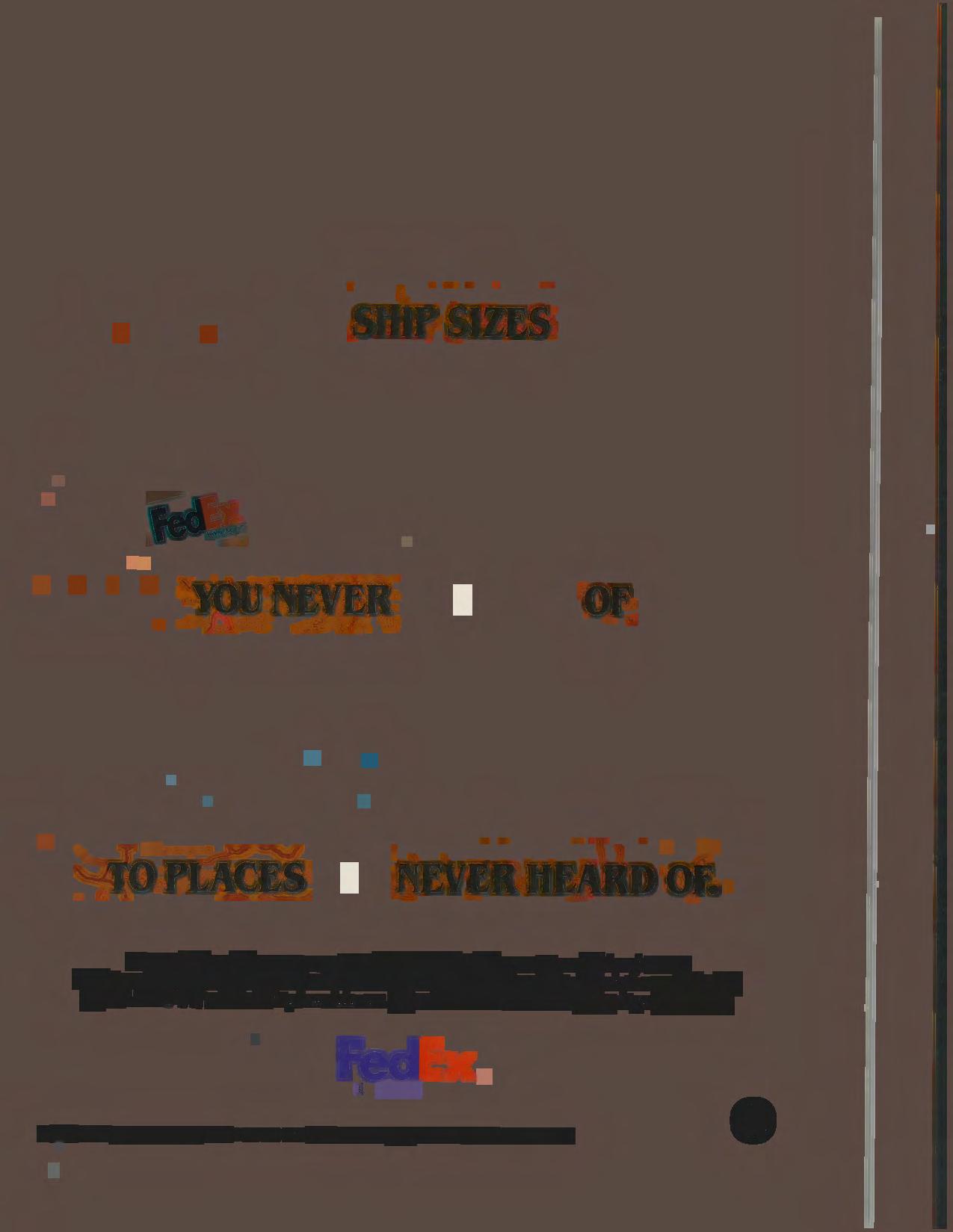

The friendly common user interface puts all elements of travel planning and processing into your hands. And it 's totally secure, integrated , and scalable. The Defense Travel System will be fielded in Defense Travel Region 6 first , and then to DoD worldwide . Visit
www.defensetravel.com to see how the Defense Travel System works for you.
